
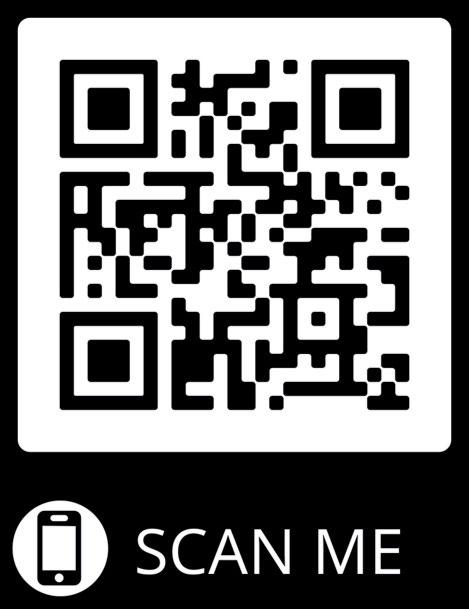




Appointment Availability
Referral Process
Convenient Locations
✅ Appointments available within 1 week, ensuring faster care and treatment.
✅ Self-referrals accepted, making it easier for patients to get evaluated without needing another doctor’s referral.
✅ Multiple regional locations for easy access and reduced travel burden.
Conditions Treated: Peripheral Arterial Disease | Amputation Prevention
Varicose Vein & Venous Issues | Renal Vascular | Ca
Extremity Wound Care | Mesenteric Vascular | Aneurys



















o n t a c t u s















“People are just as happy as they make up their minds to be.”
- Abraham Lincoln

Spring is one of my favorite times of year. The air is crisp and clean, nature comes alive with colors and sounds, and activities with family and friends pick up after the slower winter months. As nature begins to wake back up, so do our daily schedules. This season is filled with work, social engagements, and activities, all while balancing our health and that of our family. I like to think of it as busy with blessings.
In this Spring Issue of HealthScope® magazine, you’ll find helpful information to navigate the season. Insightful content on everything from health and wellness to lifestyle and nutrition awaits!
Leading off, in “What’s That Ringing?,” area experts share symptoms, causes, and treatment options for tinnitus. Next, “Spring Allergies” provides clarity on how you can find relief from the allergens that so often blanket our area this time of year. Lastly, in “Emotional Intelligence,” three area professionals provide insight into how managing and responding to emotions can impact day-to-day life as well as relationships.
Next up, in the “Annual Tech for Your Health Section,” seven local healthcare providers spotlight the technology they are using to offer the utmost care to their patients.
As we know, health is all encompassing: mental, physical, emotional, relational, and more. Balancing out

Cailey Mullinix Easterly CO-PUBLISHER
this issue, you’ll find topics covering career and finance, parenting and relationships, and beauty and style. Plus, check out healthy recipes featuring small but mighty seeds and a local guided workout.
Not to be missed are special sections “Beautifully You!,” highlighting a selection of our area’s skilled and dedicated cosmetic professionals, and the annual “Must-Have Mother’s Day Gift Guide,” showcasing a range of gifts perfect for the special mom in your life.
Last but certainly not least, meet our cover model Sheyla Jordan! Jordan is a woman of many trades: mom, business owner, fitness guru, and so much more. Check out page 66 for her insights on curating an enjoyable, balanced, and healthy lifestyle.
As always, we hope you find this Spring Issue of HealthScope® magazine informative, uplifting, and inspiring as you take on the season ahead.
Happy reading!


Lisa Duhaime, MD Board-Certified Medical Oncologist

Arif Ali, MD Board-Certified Radiation Oncologist

Lee Ann Brown, DNP, APRN Board-Certified Oncology Advanced Nurse Practitioner
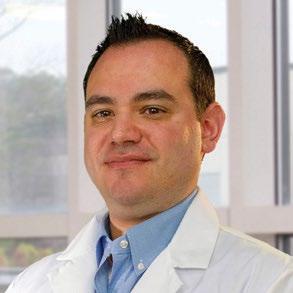
Nick Galanopoulus, MD Board-Certified Radiation Oncologist
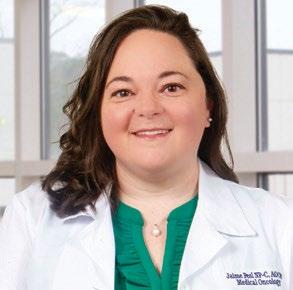
Jaime Pesl, MSN, APRN, AGPCNP-C, AOCNP Board-Certified Oncology Advanced Nurse Practitioner



Adrian Miller, MD, DABR Board-Certified Radiologist

Muna Wagner, DNP, FNP-BC, ACNPC-AG Board-Certified Oncology Advanced Nurse Practitioner

Kimberly Bailey, MSN, APRN, AGPCNP-BC, AOCNP Board-Certified Oncology Advanced Nurse Practitioner
Peeples Cancer Institute at Hamilton Medical Center combines leading-edge treatments with expert, personalized support to provide the best possible outcomes for our patients and their families.
• Board-certified medical oncologists, radiation oncologists, a breast specialist, a radiologist, and surgeons
• State-of-the-art radiation therapies
• Customized treatment plans
• Phase III Clinical Trials
• Genetic testing and counseling
• 3D mammography and ultrasound imaging
• Patient navigation and oncology social work services















Enjoy the confidence, respect, and career oppor tunities that come with an advanced degree.
Your life
Classes meet one day each week , so you can manage work and responsibilities on your time.
You choose.
Full- and par t-time options allow for a customized study plan that works for you. We also offer accelerated RN-to-MSN programs, post-master ’s cer tificates, and a dual MSN/MBA degree
You succeed.
MSN graduates from Southern Adventist University have 100 percent job placement in their chosen field.
Master of Science in Nursing
• Acute Care – Adult /Gerontology Nurse Practitioner
• Primary Care – Adult /Gerontology Nurse Practitioner
• Primary Care – Family Nurse Practitioner
• Primary Care – Psychiatric Mental Health Nurse Practitioner (online )
• Nurse Educator (online )
• MSN/MBA (online )
Call or visit online to find out how you can get star ted.
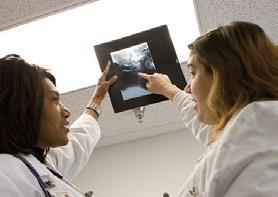




HealthScopeMag.com
Spring 2025 • Vol. 36 Issue 3
Publisher George Mullinix
Co-Publisher Cailey Mullinix Easterly
Sales & Business Development Amanda Worley
Sales & New Business Development Meredith McNeeley
Design Lead, Sr. Graphic Designer Lauren Robinson
Sr. Graphic Designer Tamara Slocum
Freelance Graphic Designer Delve Studio
Managing Editor Rachel Studebaker
Editors Kristen Dee Tory Irmeger
Editors/Digital
Content Specialists Lindsey Clute Ali Lemmons
Director of Digital Marketing Ruth Kaiser De Backer
Digital Marketing Assistant Houston McLain
Digital Marketing Intern Bryan Hunt
Marketing, Events, & Operations Laci Lanier Jackson
Photographers
Creative Revolver Kristina Armstrong Rich Smith
Subscribe to CityScope® or HealthScope® magazines: Call 423.266.3440 or visit cityscopemag.com or health scopemag.com and click “Subscribe.” A one-year subscription for CityScope® or HealthScope® magazine costs $18.
To receive advertising information, change your mailing address, or share your views on editorial: Call 423.266.3440 or visit cityscopemag.com or healthscopemag.com and click “Contact.”

Sheyla Jordan
Photo by Kristina Armstrong
CityScope® and HealthScope® magazines and Choose Chattanooga® – Chattanooga Resource & Relocation Guide® (the magazines) are published by CMC Publications, LLC, a Chattanooga, Tennessee company. Reproduction in whole or in part without written permission is strictly prohibited. Views expressed herein are those of the authors or those interviewed and not necessarily those of the publisher, editors, or advertisers. The publisher, editors, and advertisers disclaim any responsibility or liability for such material. All content associated with and included in advertisements (ads, advertorial, and special promotional sections) placed in the magazines are the responsibility of the respective advertiser. CMC Publications, LLC, cannot and does not assume responsibility for any material contained within or associated with any advertisement.
CityScope® magazine
Copyright, CMC Publications, LLC, 1993
CityScope® magazine is a registered trademark owned by CMC Publications, LLC.
HealthScope® magazine
Copyright, CMC Publications, LLC, 1989
HealthScope® magazine is a registered trademark owned by CMC Publications, LLC.
Choose Chattanooga® – Chattanooga Resource & Relocation Guide®
Choose

QMy child has been coughing a lot lately, and I’m not sure if it’s a simple cold or if I should be more concerned. When should I bring them in for a visit?
A. Good question! Coughing is a very common and nagging problem that can last much longer than any of us would like! Usually a cough is caused by viruses, but it can also be related to strep throat as well as allergies and occasionally reflux. Generally, a cough that lasts more than two or three weeks needs to be evaluated more closely. However, if there are other associated symptoms, such as a fever above 100.4 degrees, body aches, chills, wheezing, and vomiting after coughing, we recommend coming in for evaluation, testing, and treatment. At AFC Urgent Care, we have rapid testing available to help diagnose the problem. We are also very adept at helping you find solutions to coughing that can get you feeling better!
Todd
Rudolph, MD

Q. I’ve recently experienced a significant loss, and I’m struggling with grief. How can therapy help me cope with this, and what should I expect from grief counseling?
A. Grieving is a natural response to significant loss. The emotional pain we may experience in reaction to loss can make functioning in our daily lives more difficult. Sometimes, maybe, it can be debilitating for a time. Grief is a universal human experience. During times of loss and significant transitions, many may find the private, supportive, and nurturing space of therapy to be helpful. Grief exists in a relational context. We often thrive as others bear witness to our experience, walk alongside us, bear us up under the weight of our pain, and provide a steady presence to soothe our souls. In grief counseling, you can find someone uniquely qualified to process the pain of loss with you and assist you in navigating it in a manner that honors your unique experience while illuminating a pathway through it.
Kathy Hilbert, LPC-MHSP
Q. My family member has been showing signs of memory loss and confusion, and I’m worried they might have early-onset dementia. When is it time to explore memory care options?
A. When a family member is exhibiting cognitive change, the first step is for the individual to complete a full medical assessment in order to rule out medical conditions which may be causing the cognitive change, such as thyroid disease, electrolyte imbalance, below-normal vitamin D levels, and below-normal folate levels. Along with comprehensive lab work, the medical provider may also order radiological testing, such as a CT scan or MRI of the brain. Once the diagnosis of dementia and the possible cause for the dementia is identified, the next consideration is safety. Is your loved one able to safely perform his or her activities of daily living (ADLs) without putting themselves or others at risk? For example, your loved one is unable to administer his or her own medications or she gets lost driving to the church she has attended for many years. If your loved one requires constant supervision in order to be safe, it is time to consider care options. Beth Janney, RN

Todd Rudolph, MD Medical Director, AFC Urgent Care afcurgentcare.com

Kathy Hilbert, LPC-MHSP Counselor, Roots Counseling Center rootscounselingcenter.com
Q. After the cold winter months, my skin is feeling dry and lackluster no matter how much I moisturize. What else can I do to hydrate and replenish my skin?
A. If your skin is feeling dry and lackluster despite moisturizing, treatments like Moxi Laser Resurfacing and a VI Peel can provide significant relief by exfoliating and rejuvenating your skin. Moxi Laser Resurfacing uses fractional laser technology to target the outer layers of the skin, stimulating collagen production while removing dead, dry skin cells. This process reveals smoother, more hydrated skin with improved texture and tone. The VI Peel, specifically designed for skin rejuvenation, uses a blend of powerful acids to exfoliate the skin, removing damaged cells and promoting healthy cell turnover. This peel helps to brighten and hydrate the skin, reducing dryness and dullness. Both treatments work together to exfoliate, hydrate, and restore your skin, giving it the refreshing renewal it needs after the harsh winter months. Cora LeSar
Q. My child sometimes feels uneasy in new social situations. What strategies or behavioral techniques can help them build confidence and feel more at ease when meeting new people?
A. Start simple: Identify a starting point where your child is most likely to be successful. Maybe it’s just a wave, a quick “hello,” or telling someone their name. Prepare and practice: Help your child understand what to expect from a new situation by talking about who will be there or showing them pictures. Just as it can be helpful to remind your child ahead of time what you would like them to do, it can be equally helpful to remind them what they can do if they are feeling overwhelmed. For some children, it may be beneficial to practice these things or repeat them back to you shortly beforehand. Validate and celebrate: Respond to signs of uneasiness with empathy and validation. Find successes in small steps and recognize your child for things they did well. Positive reinforcement can help build their confidence over time. Jane White, MA, BCBA, LBA

Beth Janney, RN Corporate Director of Memory Care, Morning Pointe Senior Living morningpointe.com

Cora
Licensed Esthetician & Acne and Laser Specialist, Alchemy MedSpa & Wellness Center alchemymedspachatt.com

Jane White, MA, BCBA, LBA ABA Services Director, Siskin Children’s Institute siskin.org
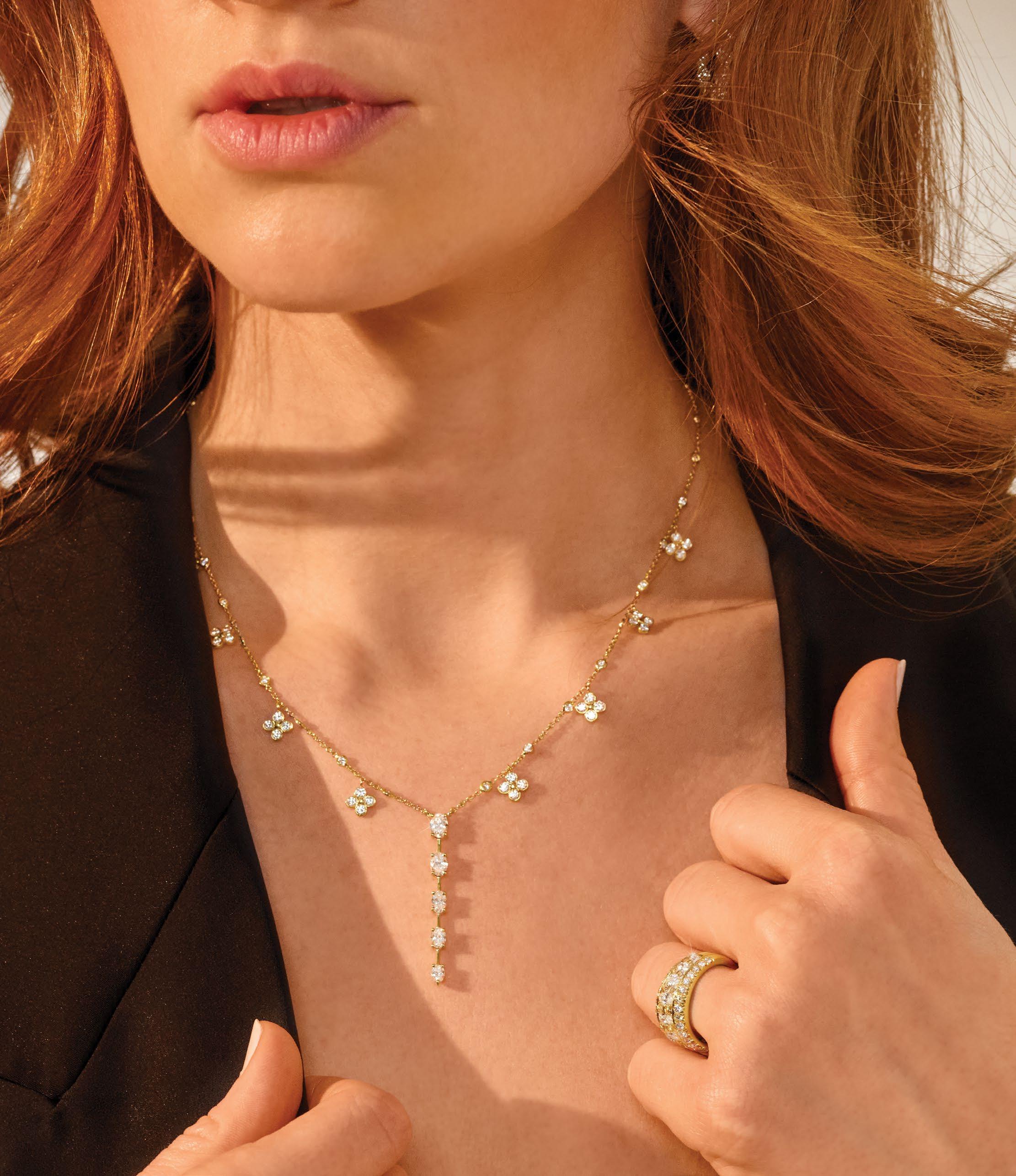









CHI MEMORIAL
John Lelli, MD
CHI Memorial Medical Group is pleased to announce that Dr. John Lelli, internal medicine physician, has joined CHI Memorial Primary Care Associates - Glenwood. Dr. Lelli earned his medical degree from Michigan State University College of Human Medicine and completed his residency in internal medicine at Hamilton Medical Center in Dalton, GA.

ERLANGER
Kelly Peak, PA-C
Erlanger Gastroenterology is excited to announce the addition of Kelly Peak to their team. Peak completed her undergraduate education at the University of North Carolina Wilmington, where she earned a Bachelor of Science degree in biology. Prior to attending PA school at South University, Tampa, Peak worked as a surgical technologist for three years.

SISKIN CHILDREN’S INSTITUTE
Ashley Wolfe Evans
Siskin Children’s Institute is proud to welcome Ashley Wolfe Evans as the new director of development. With over 20 years of experience in nonprofit management, Wolfe Evans brings a wealth of expertise in major gift fundraising, capital campaigns, grant writing, and leadership initiatives to the Institute.

AUSTIN HATCHER FOUNDATION
Katey Koon
Katey Koon has joined the Austin Hatcher Foundation team in advancing its mission as the marketing manager. An experienced marketer, Koon has a strong background in nonprofit brands and a passion for supporting the well-being of cancer families.

CHI MEMORIAL
Chandler Chastain, FNP-BC
CHI Memorial Medical Group is pleased to welcome Chandler Chastain to CHI Memorial Family Practice Associates - Cleveland. Chastain earned a master’s degree in nursing from Vanderbilt University in Nashville, TN, and a bachelor’s in healthcare administration from Samford University in Birmingham, AL.

ERLANGER
Kreg Jonson, MD
Erlanger Women’s Health is proud to welcome Dr. Kreg Jonson to their team of OB/GYN providers. Dr. Jonson is dedicated to providing compassionate medical care to women throughout every stage of their life. His areas of expertise include complex pregnancy management, conducting minimally invasive surgical procedures, and providing comprehensive gynecologic care.

MORNING POINTE SENIOR LIVING
John Little
Morning Pointe Senior Living recently named John Little as senior vice president of accounting for the company. Little brings 12 years of experience in accounting to this role. He holds a master’s degree in data analytics from the University of Tennessee at Chattanooga and a bachelor’s degree in business administration from Union Adventist University in Lincoln, NE.

AUSTIN HATCHER FOUNDATION
Catherine Carter
Joining the Austin Hatcher Foundation’s clinical staff in an effort to provide more personalized care to Spanish-speaking families is Catherine Carter. Carter holds a master’s degree in social work from Portland State University and brings 10 years of experience in social services.


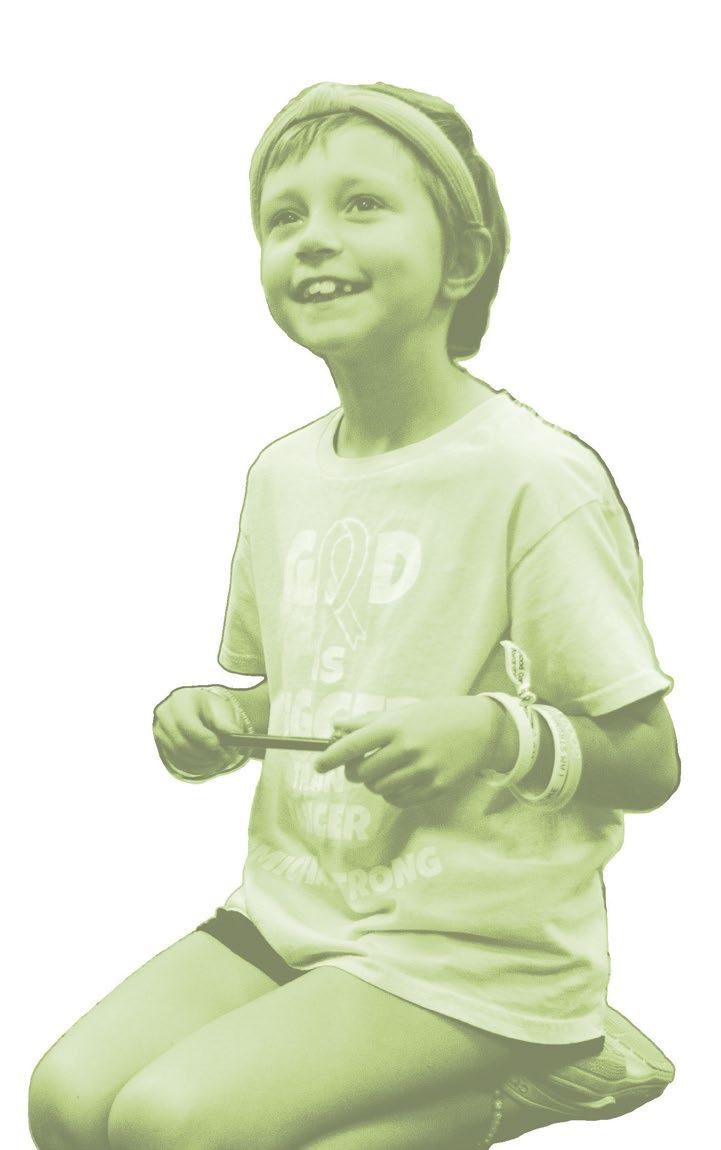

Believe Bash
Save the date for Erlanger’s signature event, the Believe Bash, presented by First Horizon. This extraordinary event, set for Saturday, April 26, 2025, will transport guests into the vibrant, colorful world of Bollywood at the Chattanooga Convention Center. Guests will enjoy an “East Meets West” dinner, dancing, a live auction, and more while raising funds to support Erlanger’s charitable initiatives, including projects for adults and children. erlangerfoundation.org/ believe-bash
Opening Weekend at the Chattanooga Market
The Chattanooga Market will be back for its 2025 season on April 26 and 27 at the First Horizon Pavilion. Vendors will be ready with farm produce, artisan foods, fresh flowers, arts and crafts, and more. Visitors can also expect live music and food trucks, plus free admission. Hours are 10 a.m. to 5 p.m. on Saturday and 11 a.m. to 4 p.m. on Sunday. chattanoogamarket.com
2
Bunny Hop! 2025
Bunny Hop! is a familyfriendly fundraiser benefiting the Chambliss Center for Children. This event will be held in the spacious and open-air First Horizon Pavilion from 6 to 8:30 p.m. Kids can enjoy various activities, including arts and crafts, a baby animal petting station, face painting, a photo booth, karaoke, and more! All children in attendance will receive a Peter Rabbit coloring book to take home, and parents can also enjoy an evening of festivities – including dinner and a silent auction. chamblisscenter.org/ events/2025/bunnyhop
3 ChattaDerby
Racing to end homelessness, Chattanooga Room in the Inn’s ChattaDerby 2025 is held the same day as the Kentucky Derby. Enjoy the excitement of the big race on a large-screen TV while indulging in complimentary Kentucky Derby-inspired food and drinks. There will also be a silent auction, fun contests, and much more. The event takes place at The Signal from 5 to 8:30 p.m. chattanoogaroomin theinn.com/derby
5 Morning Pointe Foundation Annual Golf Tournament
Morning Pointe Foundation’s 10th annual Mastering Memory Care Golf Tournament will be held on May 5. Hosted at the Lookout Mountain Club in Georgia, registration begins at 7:30 a.m. followed by a catered breakfast. The tournament begins at 8:30 a.m., and attendees can anticipate an awards banquet and luncheon at 1 p.m. to conclude the event. morningpointefoundation.com/ events/golf
8 2025 UnBought and UnBossed Sneaker Gala & Silent Auction
UnBought and UnBossed – a tribute to the spirit and determination of late Congresswoman Shirley Chisholm – brings together supporters and honors female community leaders who exemplify the Girls Inc. mission: Strong, Smart, and Bold. Girls Inc.’s largest fundraiser of the year will feature dinner, lively dancing, and a silent auction. Starting at 6 p.m., this evening of celebration will take place at the Chattnooga Convention Center, with all proceeds going back to the heart of the organization – its programs. girlsincofchatt.org/events/ ubub2025
The Go Red for Women event experience focuses on connection and engagement, fostering an atmosphere of interaction and networking at every turn. It will celebrate the power of women banding together and the joy of spending time with fellow champions of the American Heart Association’s mission. The event will include education and experiences that can help improve your health and well-being and that of the women you know and love. heart.org/chattgored
The Austin Hatcher Foundation is hosting its fourth annual “Monday After the Masters” Golf Tournament on Monday, May 12, at The
Farm Golf Club in Rocky Face, GA. Teams are welcome to register in groups of four, and attendees can enjoy a catered lunch, a silent auction with many items and gift cards from local businesses, and a light reception after the tournament. The event and auction help fund the Foundation’s mission to support families affected by pediatric cancer with 100%-free mental and behavioral health counseling and services. hatcherfoundation.org/events/ monday-after-the-masters
Celebrating 10 years, the 2025 IRONMAN 70.3 Chattanooga offers the perfect training opportunity for those getting ready for the full-distance IRONMAN Chattanooga or a chance to race in one

of the triathlon’s most welcoming race communities on the IRONMAN 70.3 circuit. It begins with a 1.2-mile swim, transitions into a 56-mile bike course, and then ends with a 13.1-mile run. ironman. com/im703-chattanooga
Our community’s oldest active competitive road race, the Chattanooga Chase, is a Memorial Day tradition for many. Experience the scenic 8K and 1-mile races through the historic Riverview neighborhood, followed by the Hanover Street Block Party. All proceeds benefit the Chattanooga Track Club and Siskin Children’s Institute, supporting fitness and children with special needs. Don’t miss the 58th running of the Chattanooga Chase! chattanoogachase.org
According to the Mayo Clinic, people ages 2 and older should ingest 14 grams of fiber for every 1,000 calories consumed in their daily diet. Fiber can be found naturally in fruits, like raspberries, pears, and apples; vegetables, like green peas, broccoli, and turnip greens; and grains, like whole-wheat pasta, quinoa, and oatmeal.
According to the National Center for Health Promotion and Disease Prevention, it’s important to drink in moderation to reduce your risk of alcohol-related health problems. The center recommends that women have no more than one drink per day and that men have no more than two drinks per day.
One standard drink includes any one of the following:
• 12 ounces of regular beer
• 8 to 9 ounces of malt liquor
• 5 ounces of wine
• 1.5 ounces of hard liquor
5 minutes after a meal
Research shows that a short 2- to 5-minute walk after a meal can help manage your blood sugar. While your blood sugar levels change throughout the day, keeping your levels consistent can help you avoid feeling tired after you eat. (Goodbye post-lunch crash!)
According to the Obesity Action Coalition, losing just 5 to 10% of your body weight can provide a whole host of health benefits to those struggling with obesity. This amount of weight loss may:
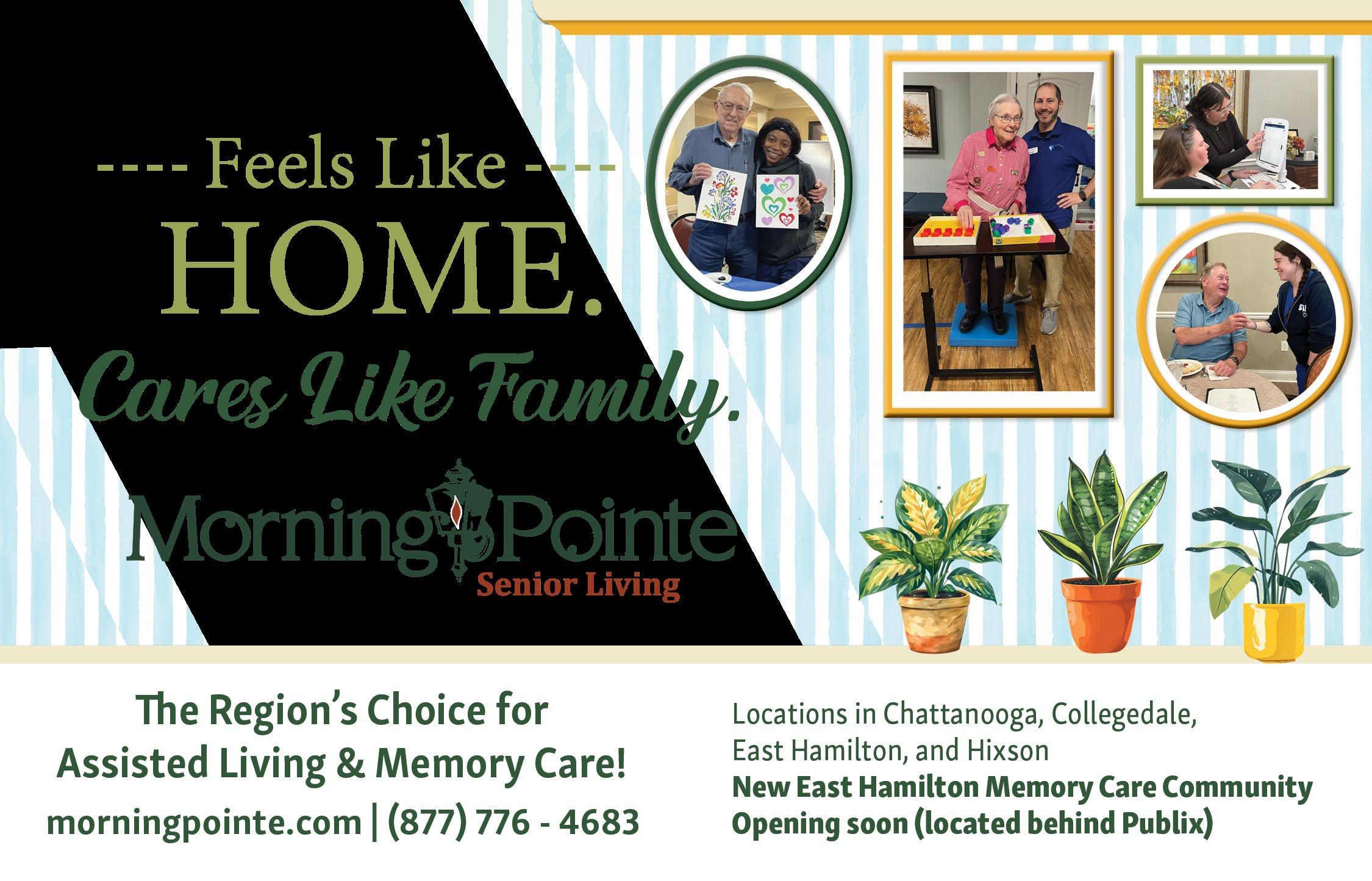



Supported by extensive research, every project is backed by a comprehensive marketing strategy and communication plan. With a proven approach, our clients’ sales conversions have exceeded the industry average by more than 400%. Sales conversions relative to ad spending have exceeded 250x.


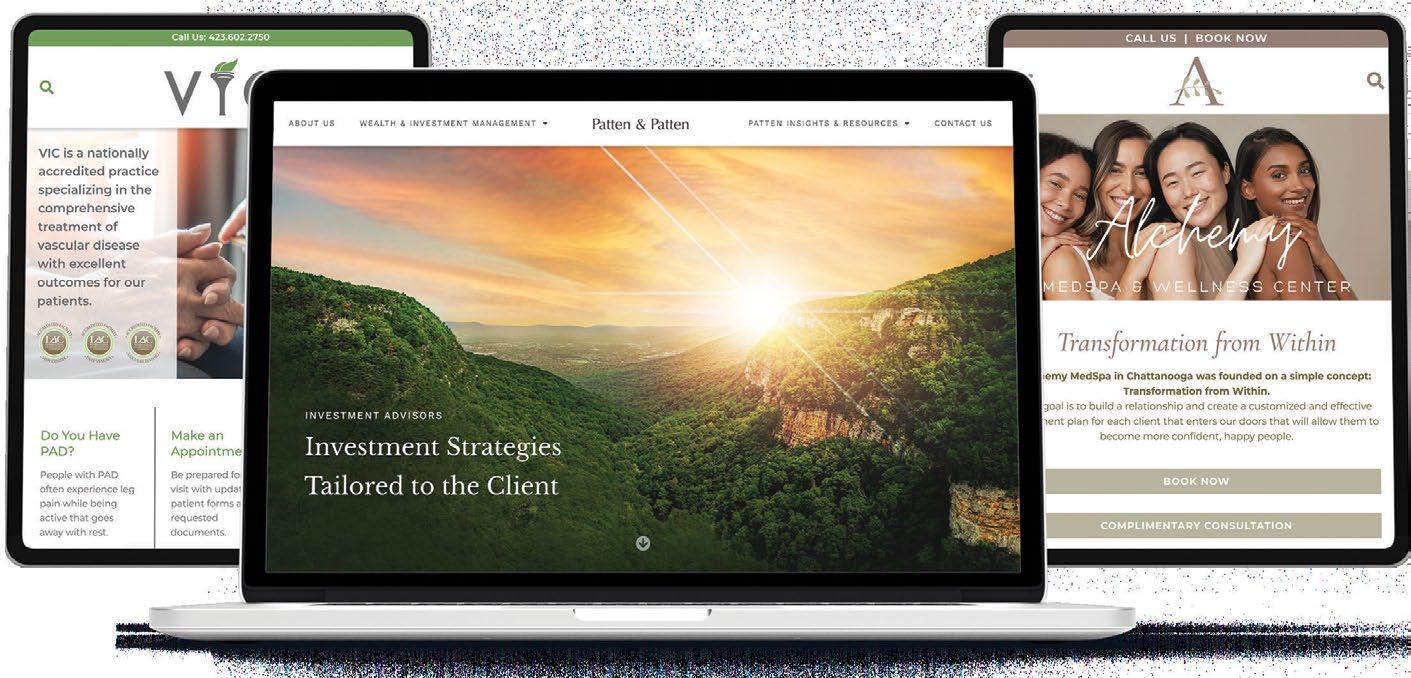

By Ali Lemmons
Tinnitus is defined as ringing or other noises in one or both of the ears. These noises aren’t caused by external sound and can only be heard by the affected individual.
Tinnitus is a common health condition, affecting around 15% of the world’s population and more than 50 million Americans. While people of any age may suffer from tinnitus, it most commonly affects those between the ages of 40 and 80.
Phantom noises are the main symptom of tinnitus. According to Dr. Wendy Halsey-Richardson, audiologist at Chattanooga’s Healthy Hearing, “While tinnitus is often described as ringing, it can also include sounds such as buzzing, insect chirping, swooshing, or clicking, to describe a few.” The noises may range in pitch, from a low roar to a high squeal, and in volume, from soft and barely noticeable to so loud that it interferes with an individual’s ability to concentrate or hear other external sounds.
Symptoms of tinnitus may come and go or be present at all times. According to Cheryl Ward, board-certified hearing instrument specialist at Audiology Services of Chattanooga, “Occasional tinnitus is usually not severe enough to affect daily life, but tinnitus that is constant can negatively affect sleep, mood, and impact daily activities, which could lead to depression or anxiety.”
In some cases, such as with somatosensory tinnitus, moving your head, neck, or eyes can produce these phantom noises or temporarily change the quality of the sound. This subgroup is present in 65% of tinnitus cases.




Tinnitus itself is not a disease, but rather a symptom of an underlying health condition. Common causes of tinnitus include:
• Age-related hearing loss: “Age-related hearing loss is one of the leading contributors to tinnitus, as the auditory system may become more sensitive to internal sounds when external auditory input diminishes,” according to Dr. Tiffany Ahlberg, audiologist at Ahlberg Audiology. In the U.S., about 1 in 3 adults between the ages of 65 to 74 suffer from hearing loss.
• Noise-induced hearing loss: Excessive exposure to loud sounds can cause hearing loss, and in turn, tinnitus. This may occur after prolonged exposure to loud noises from machinery, concerts, headphones, and more.
• Ear infection or blockage: A buildup of fluid from an infection, dirt or other foreign materials, or excessive earwax can cause temporary tinnitus. This is usually
treatable and ringing may go away after the blockage is cleared.
• Medications: Tinnitus can also develop, or worsen, as a side effect of taking certain medications. Certain drugs such as nonsteroidal anti-inflammatory drugs (NSAIDs), cancer drugs, and antidepressants may cause ringing in the ears.
• Head and neck injuries: Trauma to the head or neck, like a concussion, can affect the inner ear, hearing nerves, or brain function related to hearing. When an injury causes tinnitus, it usually only presents in one ear.
According to Dr. Ahlberg, tinnitus can also be caused by a variety of health conditions. “Health issues such as hypertension, diabetes, and thyroid disorders can contribute to the development of tinnitus, emphasizing the importance of comprehensive medical assessments,” she says. “Anxiety, depression, and stress are significant contributors to the exacerbation of tinnitus. Patients often report that their tinnitus worsens during periods of emotional distress.”
“For a tinnitus evaluation, the audiologists at Chattanooga’s Healthy Hearing start with otoscopy to look into the external ear canal. They want to rule out wax impaction, visible trauma to the tissue or eardrum, and drainage or debris that could be infection. Next, tympanometry would let them know if the eardrum is intact and moving like it should, if there is middle ear dysfunction often caused by fluid or infection, or if the eustachian tube is malfunctioning. This would be followed by a diagnostic hearing evaluation to determine if there is hearing loss and the type and severity. A tinnitus evaluation may also include a questionnaire addressing the perceived severity of your tinnitus and effect it has on your life.” Dr. Wendy Halsey-Richardson




There is no one-size-fits-all solution to treating tinnitus, and treatment may vary depending on what is causing tinnitus in the affected individual. A doctor may be able to reduce symptoms of tinnitus by removing earwax blockage, treating an underlying health condition, or recommending a change in medication.
Professionally adjusted hearing aids can also be used to treat tinnitus, according to Ward. “Hearing aids would be programmed to raise ambient sounds to a normal level, thereby giving one’s brain something to focus on instead of their head noise,” she says. “This is known as masking the tinnitus sound one is experiencing. Today’s hearing aid technology has better ability to achieve this with accuracy.”
In cases where tinnitus cannot be treated, healthcare providers may recommend lifestyle changes
and therapy to manage the symptoms and severity. “Engaging in regular physical activity, maintaining a balanced diet, and ensuring adequate sleep can contribute to overall well-being and potentially lessen tinnitus severity,” shares Dr. Ahlberg. “Practicing relaxation techniques such as yoga, meditation, or deepbreathing exercises can help reduce stress and its impact on tinnitus perception. Connecting with support groups or seeking counseling can provide emotional support and practical advice from others who understand the challenges of living with tinnitus.”
While some individuals aren’t bothered by their symptoms, those with severe tinnitus may find that it negatively impacts their day-to-day life. “Tinnitus is
often considered minor but for millions of people it can disrupt sleep, concentration, and one's sense of calm, leading to anxiety and depression,” explains Dr. Halsey-Richardson. If tinnitus affects an individual’s quality of life or mental health, it’s important to consult a healthcare provider.
“In rare cases, tinnitus may indicate a serious underlying health issue that could possibly be dangerous if left untreated,” says Ward. “If other symptoms accompany tinnitus, such as high blood pressure, diabetes, headaches, or other chronic illness, it is always best to seek the advice of one’s physician for further testing to eliminate a more serious condition.”
While tinnitus can be troublesome, healthcare professionals can offer medical guidance, treatment options, and management techniques to provide relief and allow individuals to regain control over their well-being.

YOUR GUIDE FOR PREMIER HEALTHCARE IN THE GREATER CHATTANOOGA AREA
A BRAND NEW SPECIAL ISSUE FOCUSING ON LOCAL HEALTHCARE
Featuring Peer-Elected Top Doctors Across 50+ Specialties
Rigorously vetted by a national physicianled research firm & local advisory board.




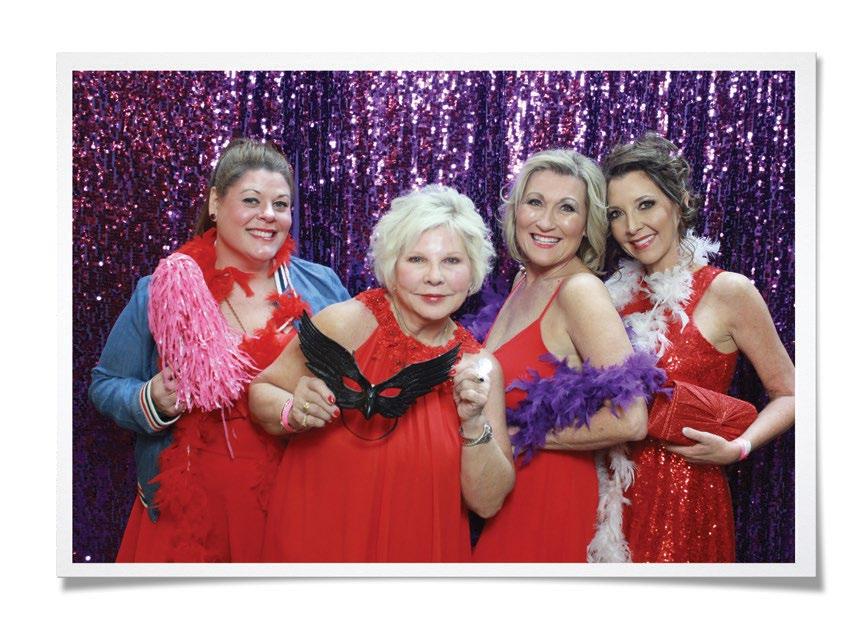
Thanks to the generous support of our sponsors and attendees, in 2025, The Moth Ball® by CityScope® will gift over $40,000 to support Welcome Home of Chattanooga!





NORTHPOINT DENTAL CO. • SWEET MELISSA’S BILLIARDS
CHATTANOOGA HEART INSTITUTE
BRODY JEWELERS • KATY POOLE WELLNESS FERTILITY CONSULTING
PINNACLE FINANCIAL PARTNERS • THE EDWIN HOTEL • WANDERLUST AND WOLF
RADONNA GADDIS - ENGLAND INJURY LAW
OFFICIAL WINE SPONSOR: ATHENS DISTRIBUTING

By Kristen Dee
While many of us look forward to the warmer temperatures of spring, being outside during these months can lead to sniffling, sneezing, itchy eyes, and other symptoms of seasonal allergies. It can put a damper on your plans, but there are ways to manage your symptoms and find relief. Here, we explore the causes of seasonal allergies and speak to local allergy professionals who offer advice on prevention and management.





According to the CDC, around a quarter of U.S. adults and 1 in 5 children have seasonal allergies. Seasonal allergies, also referred to as hay fever and allergic rhinitis, are the immune system responding to an increase in triggers. Symptoms may vary from person to person but typically include a runny nose, sneezing, congestion, and itchy, watery eyes. Dr. Taylor Atchley, an allergist and immunologist at The Allergy and Asthma Group of Galen, says that spring allergies are most often triggered by several factors. He explains, “During the spring, trees such as oak, cedar, and maple release large amounts of pollen. Grass also releases pollen, which contributes to hay fever in the late spring and early summer months. Mold spores on decaying leaves and grass are abundant in the spring, and moisture from spring rains or melting snow contribute to mold growth. Dust mites also thrive in the humid spring environment. Additionally, changes in weather stir up the pollen and dust, and sudden temperature and pressure fluctuations can exacerbate allergy symptoms.”
Although symptoms may be similiar, there are a few key symptoms that will occur with colds that don’t occur with allergies. Here’s how to spot the difference:
Symptoms
Body aches/pain
Headache
Cough
Fatigue
Itchy, watery eyes
Runny/stuffy nose
Sore throat
Duration
While spring allergies may begin to flare up as the weather gets warmer, you may still be in an area where contagious colds or other illnesses are spreading. Often, allergy symptoms may look similar to cold symptoms, such as a runny nose, sneezing, and congestion, which can leave you wondering if you simply have allergies or something more serious. There are a few key symptoms that will occur with a cold or the flu that don’t occur with allergies, including a sore throat, persistent cough, and the presence of a fever. Additionally, your allergies may cause itchy or watery eyes, which likely won’t be present with a more serious illness.
Allergy symptoms present similarly for children and may also include ear infections due to
fluid accumulation. Children’s allergies should be addressed quickly to avoid future complications of long-term congestion such as improper teeth and facial bone growth and asthma. Dr. Todd Levin, a board-certified allergist at Chattanooga Allergy Clinic, suggests implementing treatments as quickly as possible, saying, “Children with untreated allergies are at higher risk for asthma, so early treatment is crucial.” While determining whether your child has allergies or is sick can be tricky, Dr. Lindsay Gammenthaler, a pediatrician at Spring Creek Pediatrics, shares that parents should be on the lookout for a fever, significant fatigue, and a change in their child’s eating habits, as these signs likely point to an illness rather than allergies.











While there is no cure for seasonal allergies, there are a variety of preventive strategies and treatment options that can improve symptoms. According to Dr. Gammenthaler, minimizing exposure is key. “Decreasing allergy symptoms starts with minimizing exposure,” she says. “Regular vacuuming and dusting each week and cleaning bed sheets – as well as those beloved kids’ stuffies – can be very helpful. It may also be time to change the air filters in the home.” You may want to stay indoors on dry, windy days and in the mornings when pollen counts are highest, keep windows and doors closed, shower before bed, hydrate well to thin mucus, and wear a face mask when doing outside chores. Pollen forecasts are available online to see when high pollen counts are predicted.
If symptoms persist and even begin to interfere with daily life, you may need additional treatments. “If minimizing exposures does not work, consider nasal saline rinses or even over-the-counter antihistamines like cetirizine or loratadine,” says Dr. Gammenthaler. Dr. Levin agrees, saying, “Over-the-counter antihistamines help reduce mucus production, while nasal steroid sprays like Flonase relieve inflammation and congestion. Saline nasal rinses can clear allergens from nasal passages and decrease sinus infections.” For itchy or watery eyes, eye drops with antihistamines can help provide relief. These options are often the first line of defense against allergies as they are readily available at local drugstores and grocery stores. It’s recommended to begin using allergy medicines before you have symptoms, as their long-term effectiveness builds up slowly.
For some, washing bedding more frequently and using an antihistamine may
be enough to help symptoms. However, some people may experience significant and often disruptive allergy symptoms, prompting further treatment. For these individuals, Dr. Atchley recommends allergy testing. “Anyone experiencing allergy symptoms such as frequent sneezing, itchy eyes, nasal congestion, or coughing, especially during specific seasons like spring, may benefit greatly from allergy testing,” he says. “Allergy testing can help pinpoint the exact substances (allergens) triggering your symptoms, making it easier to manage them effectively. We can use the results to recommend changes in your environment to cut down on the allergens you are exposed to, more effectively target what times of year to use medications, and determine if allergy desensitization injections (allergy shots) would be beneficial or not.”
Allergy shots contain a small amount of allergens, alerting the immune system but not causing a full reaction. As the body gets used to the allergen with repeated exposure, it learns not to react, and symptoms improve. The shots are typically administered one to three times a week for four to six months. This period is referred to as the “buildup” phase, in which the allergen doses are gradually increased with each shot. After the buildup phase, patients typically return once a month for three to five years to maintain their progress and continue getting relief. Most patients see noticeable relief in their symptoms between the first and second year of treatment.
While seasonal allergies can wreak havoc on plans and leave you wanting to stay indoors, there are a variety of preventive strategies and treatment options to help you get back outside. If your allergy symptoms don’t improve or begin to worsen, speak to your doctor about the best treatment options for you.

-
Our primary care FREE clinic’s impact since opening: 82,000+ Patient Visits

$6.5 Million Labs Donated
$20 Million RX Dispensed
$29 Million Total Care
170,000 Volunteer Hours
Our patients never receive a bill for medical care provided, thanks to 100+ volunteers and crucial financial support from our community.


































At some point in our lives, we’ve all let our emotions get the better of us or unintentionally overlooked the emotions of others. Whether navigating workplace conflict, negative self-talk, or strain on relationships, emotional distress can easily affect our physical and mental health. Emotional intelligence provides a framework for managing and responding to our emotions so we can more meaningfully make sense of ourselves and our relationships with others.
By Tory Irmeger
Emotional intelligence (also called emotional quotient or EQ) is a measure of how in tune you are with your emotions and the emotions of others. This framework was widely popularized by psychologist Daniel Goleman in his book Emotional Intelligence, published in 1995. Goleman outlines four ideas at the core of emotional intelligence:
• Self-Awareness: understanding your feelings and how they shape your perceptions, thoughts, and behaviors
• Self-Management: the ability to regulate and manage your emotions, thoughts, and behaviors
• Social Awareness: empathy; tuning in to the emotions, needs, and perspectives of others
• Relationship Management: the ability to effectively build relationships, communicate, and work with others
“The quality of our lives, both professionally and personally speaking, rests upon how well we manage the relationships we have with others,” says Keith Jones, a certified emotional intelligence instructor and co-CEO of EQ Bridge LLC. “At its core, emotional intelligence teaches a person how to become aware of their own emotional responses, how to manage those responses, how to read the emotional responses of others (social awareness), and how to utilize this knowledge in our relationships.”
Despite our best intentions, it’s all too easy to be overwhelmed by emotions, like at the end of a stressful day or stuck in rush-hour traffic, which can lead to shutting down or lashing out at others. By cultivating emotional intelligence, we can find ways to lower stress, improve decision-making, and connect more deeply with others. Research also finds that this is an advantage in the workplace, citing those with higher emotional intelligence tend to earn higher salaries than their peers with lower emotional intelligence.
The way we experience and process emotions is linked to our physical and mental health. “Our bodies, minds, and emotions aren’t separate departments; they’re different floors of the same building,” says Lauren Hall, president and CEO of First Things First. Increased cortisol levels from chronic stress can lead to heart disease, digestive issues, and weakened immune function. Similarly, Hall points out that unprocessed trauma can manifest as chronic pain, fatigue, and autoimmune disorders.
“On the flip side, positive emotions – like gratitude, love, and joy – release oxytocin and dopamine, which enhance immune function and lower blood pressure,” she says. “This means that when we invest in our emotional well-being, we’re also investing in our physical and mental health.”




Learning how to process and understand emotions in a constructive way is beneficial to individuals at all stages of life, from children struggling with big feelings to adults coping with life’s challenges. “Emotions are like toddlers in the backseat of a car,” Hall adds. “Ignore them, and they’ll throw a fit; let them drive, and you’ll end up in a ditch. Understanding and managing our emotions helps us navigate life with clarity rather than chaos.”
Every individual has an “emotional toolkit” with which they process feelings and the world around them. This toolkit is formed in early childhood in relationship to parents, guardians, teachers, and other influential community members. Graham Lovelady, therapist at Integrate Counseling, explains, “Our first emotional language, or literacy, is formed in our relationship with our caregivers. Before we have words, our brains learn to interpret emotions through facial expressions, tone of voice, and body language.”
Caregivers model emotional regulation to children. An individual that grew up in a home environment where emotions were validated and safely processed is more likely to have a strong foundation of emotional intelligence. On the other hand, a home environment where emotions are dismissed, punished, or
unregulated can make it more difficult for a child to understand and regulate their own emotions later in life. “These affect regulation strategies tend to hold into adulthood and form the foundational map for how we learn to interact with our emotional world,” Lovelady says. “As Mr. Rogers used to say, ‘Someone smiled you into smiling, loved you into loving.’”
Although we enter adulthood with this foundational map, it is not set in stone. Through self-reflection, therapy, and intentional practice, we can formulate more constructive ways of processing and responding to emotions. This ability to alter our patterns is what scientists call neuroplasticity, or the brain’s capacity to continue growing and evolving in response to life experiences.
As we strengthen emotional intelligence by learning how to recognize, understand, and respond to our emotions, this skill extends to our relationships with friends, family, coworkers, and neighbors. Lovelady gives us a model for applying this to our daily interactions: “As adults, it is important for us to practice what I call presence: listening to others without fixing or trying to relate that back to myself. Can we imagine what the other person’s internal world might be like? Can I have compassion for them?”
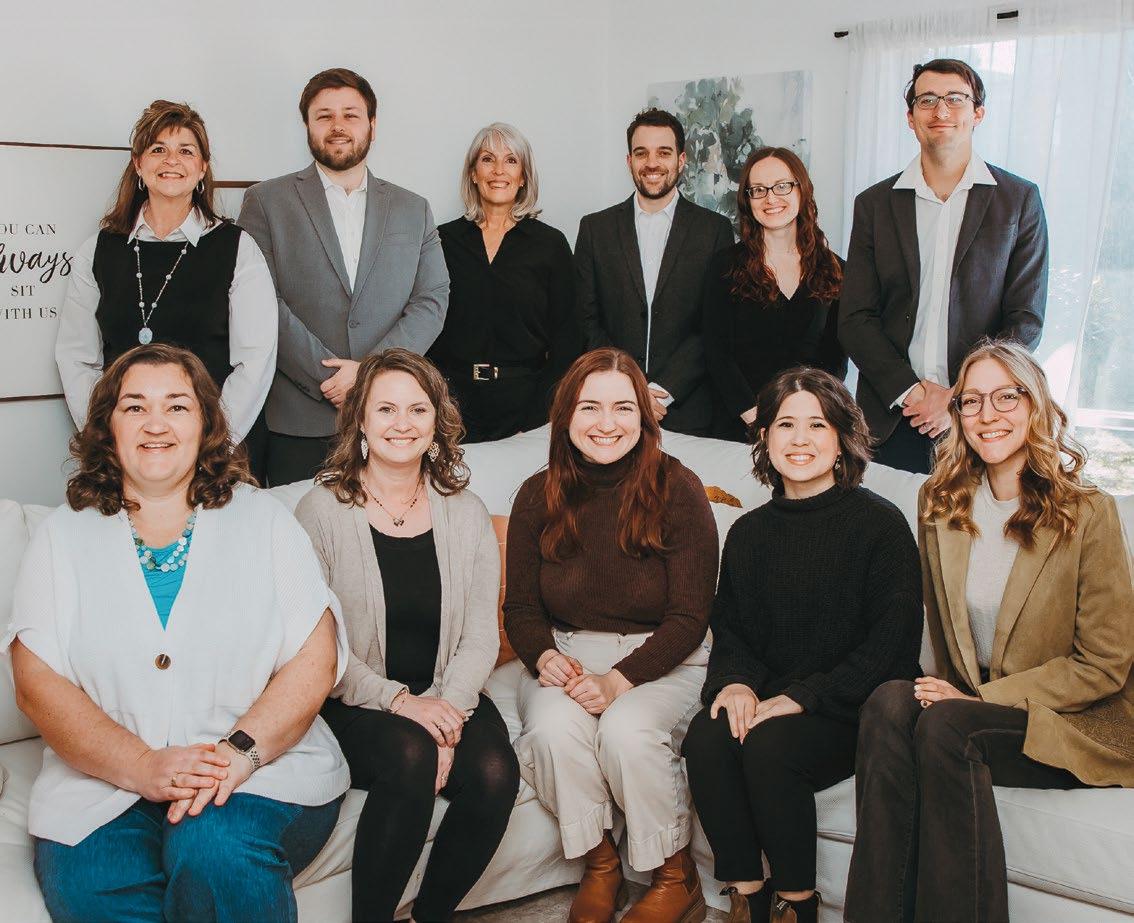

Integrate Counseling Services is a multi-modal practice housed with a trauma-informed design that immediately sets you at ease in our beautiful space. We offer evidence-based skills and services for individuals of all ages and couples/families. Our staff are honored to collaborate with you in your healing journey toward wholeness.
INTEGRATECHRISTIANCOUNSELING.COM



Listen without fixing or trying to relate what they are saying back to yourself
Improved emotional intelligence also builds leadership skills, strengthening the health of a workplace, organization, or any group endeavor. Leaders with high emotional intelligence are able to interpret the non-verbal cues of those around them, looking past what is simply said aloud to recognize the genuine feelings a person is experiencing. Listening effectively to others is a crucial skill, Jones explains:
“Too often we spend our lives giving our opinions, our suggestions, and sharing our own stories. This is really true in those with low emotional intelligence. Our society does not effectively listen to one another. If we could learn to listen with true empathy, we could see a tremendous improvement in our relationships.”
Whether in personal or professional spheres, we will inevitably experience complex and sometimes difficult emotions. Ultimately, the goal is not to ignore these feelings, Lovelady reminds us. “At its core, emotional intelligence is not about suppressing emotions but learning how to engage with them in a way that promotes psychological flexibility. When we can sit with discomfort, reflect on our emotions rather than react to them, and be curious and compassionate with ourselves, our overall sense of wellbeing increases.”
Who benefits from cultivating emotional intelligence? Absolutely everyone. I have personally trained high school students to senior citizens; from executives to homemakers. If you are in contact with another human being, emotional intelligence training will allow you to interact with those closest to you in a deeper, richer way. - Keith Jones
I want to become more emotionally aware, but I feel stuck in old patterns. What can I do? Self-awareness is fundamentally about adopting a posture of curiosity towards oneself. The goal is to be able to notice, not judge, our internal experience. We first have to be able to reflect before we react. Slowing down with meditation, mindfulness practices, journaling, and practicing curiosity are just some of the ways we can cultivate this inner curiosity. Questions like, “What am I feeling?”, “Where does this show up in my body?”, or “What is this emotion trying to say?” are all helpful starting points.
- Graham Lovelady
How can we teach empathy to our kids? Passing empathy to the next generation starts with modeling it. Kids don’t learn empathy from lectures; they learn it from watching us. When they see us treating others with kindness, apologizing when we’re wrong, and validating their emotions, they absorb those lessons. Storytelling is another powerful tool – reading books with characters who experience different emotions and challenges helps children build emotional intelligence. - Lauren Hall
How do I stop being overwhelmed by my emotions? It can be easy to take all this in and conclude that the goal is to always remain emotionally regulated, never flustered or overwhelmed. Nothing could be further from the truth! My hope is that we can all sense the invitation to slow down, simply notice, take a deep breath, and experience some curiosity about the present moment. We become more mentally flexible, resilient, and compassionate when we can do this – all of which keeps us grounded.
- Graham Lovelady



















ANNUAL SPE C IAL

Medical technology is constantly evolving to better treat today’s health and wellness concerns. From state-of-the-art robotic systems to minimally invasive surgeries, read on to learn more about the latest technological advancements in healthcare.
By Rachel Studebaker
This new robotic surgical system can aid a wide variety of procedures.

Over the years, robotic technology has continued to evolve in its ability to assist surgical teams in performing procedures. One of the latest and most advanced robotic surgery systems to emerge is the da Vinci 5 from Intuitive. With over 150 design innovations, this new technology is improving the efficiency and effectiveness of surgery.
During surgery using the da Vinci 5, the surgeon sits at a console near the operating table and remotely controls the robotic arms while referencing a high-definition, 3D view of the surgical site. The efficiency of this system can reduce procedure times as well as the length of hospital stays following surgery.
Benefits of da Vinci 5
Robotic surgery allows surgeons to perform delicate or complex procedures with more precision and
control than traditional open surgery and manipulate instruments in ways not possible with human hands. It also involves a minimally invasive approach, utilizing small incisions. This reduces scarring, postoperative pain, and the risk of complications, and it allows for a faster recovery and return to normal activities.
The da Vinci 5 system in particular boasts state-of-the-art features designed to improve outcomes. These include:
• Force Feedback , a first-of-itskind technology that delivers less force on tissue and allows for more delicate handling.
• Improved imaging that gives surgeons a clearer view of the surgical site.
• An ergonomic design with a wide range of motion and settings.
• Actionable insights provided by postoperative performance measurements.
“While there is no doubt enhancements provided by the da Vinci 5 will bring more surgeons to the robotic platform, they also have the potential to improve the operative performance of new and experienced surgeons alike. This should all culminate in improved outcomes for our patients.”


This cutting-edge procedure can treat carotid artery disease and reduce the risk of stroke.

Carotid artery disease occurs when plaque builds up in the arteries that supply blood to the brain and increases the risk of stroke. Fortunately, advancements in medical technology have made strides in stroke prevention, including the introduction of a minimally invasive procedure known as Transcarotid Artery Revascularization (TCAR).
TCAR is a state-of-the-art technique that can treat carotid artery disease by clearing blockages and opening the narrowed artery and is available to most patients with severe carotid artery disease. Performed under anesthesia, the procedure involves a surgeon inserting a specialized tube into the carotid artery through a very small incision. This tube is connected to a specialized system that temporarily reverses blood flow away from the brain to decrease the risk of stroke during the procedure. Once the artery is stabilized, a stent is placed to open the artery and restore proper blood flow.
With the growing adoption of TCAR by leading vascular specialists, more
patients have access to a safer, faster, and more effective way to reduce their stroke risk. Its benefits include:
• Minimally invasive approach. A smaller incision means less scarring and a faster recovery.
• Reduced risk. The unique flowreversal system significantly reduces the chance of debris reaching the brain during the procedure. TCAR also minimizes damage to nearby nerves compared to open surgery.
• Shorter recovery time. Most patients are able to return home the next day and resume normal activities within a week.
For those concerned about carotid artery disease, early screening and discussion with a vascular specialist can help reduce stroke risk.
An Expert Weighs In “TCAR offers several advantages over open surgery for carotid artery disease while maintaining equivalent results of stroke reduction. A smaller incision is used with minimal risk of nerve injury. The procedure can be performed under moderate sedation. TCAR directly accesses the carotid artery with a unique flow reversal system that prevents plaque from breaking off and traveling to your brain, causing a stroke. Patients experience less pain, quicker recovery, and minimal scarring.”

Francis Cuozzo, MD Vascular/Endovascular Surgeon, Vascular Institute of Chattanooga


Have you been told you have carotid artery disease? Don’t wait. At the Vascular Institute of Chattanooga, we specialize in cutting-edge stroke prevention, including Transcarotid Artery Revascularization (TCAR)—a safer, less invasive way to restore blood flow and protect your brain.





“Hip arthroscopy is a game-changer for patients dealing with persistent hip pain. This minimally invasive procedure allows us to diagnose and treat complex issues like labral tears and hip impingement with precision – leading to a successful result for patients who want to be active again. At Center for Sports Medicine & Orthopaedics, our comprehensive approach ensures that each patient receives expert surgical care along with personalized rehabilitation to restore strength and mobility. Our goal is to get you back to the activities you love as quickly and safely as possible.”

Benji Miller, MD Fellowship-Trained Sports Medicine & Arthroscopy Surgeon, Center for Sports Medicine & Orthopaedics
This minimally invasive surgery can treat a wide range of hip issues.
Arthroscopy is a common, minimally invasive surgical procedure used to diagnose and treat joint problems, including those of the hip. This advanced same-day surgery may be recommended for patients whose hip pain has not responded to nonsurgical treatment methods, and it can treat conditions such as hip impingement and labral or tendon tears.
Hip arthroscopy uses a special, small device called an arthroscope, which is a camera with a scope attached for visualization. The device is inserted through a small incision near the hip and delivers images of the inside of the hip joint to a video monitor in the operating room. Using this footage, the orthopedic surgeon can identify and repair any damage. The procedure typically takes one to two hours to complete, during which the patient is placed under general anesthesia. Afterward, patients will receive a personalized recovery plan, including physical therapy and at-home exercises to restore strength and mobility.
As a minimally invasive surgery, hip arthroscopy’s benefits include repairing tissue and working through small incisions, which helps reduce postoperative pain. Hip arthroscopy is performed as an outpatient procedure, allowing patients to return to the comfort of their home that same day to begin the recovery process. Most patients are able to resume their usual recreational activities as soon as three or four months after surgery when strength is restored. Hip arthroscopy has been proven across a broad spectrum of patients to be effective in returning patients back to their desired activity level.




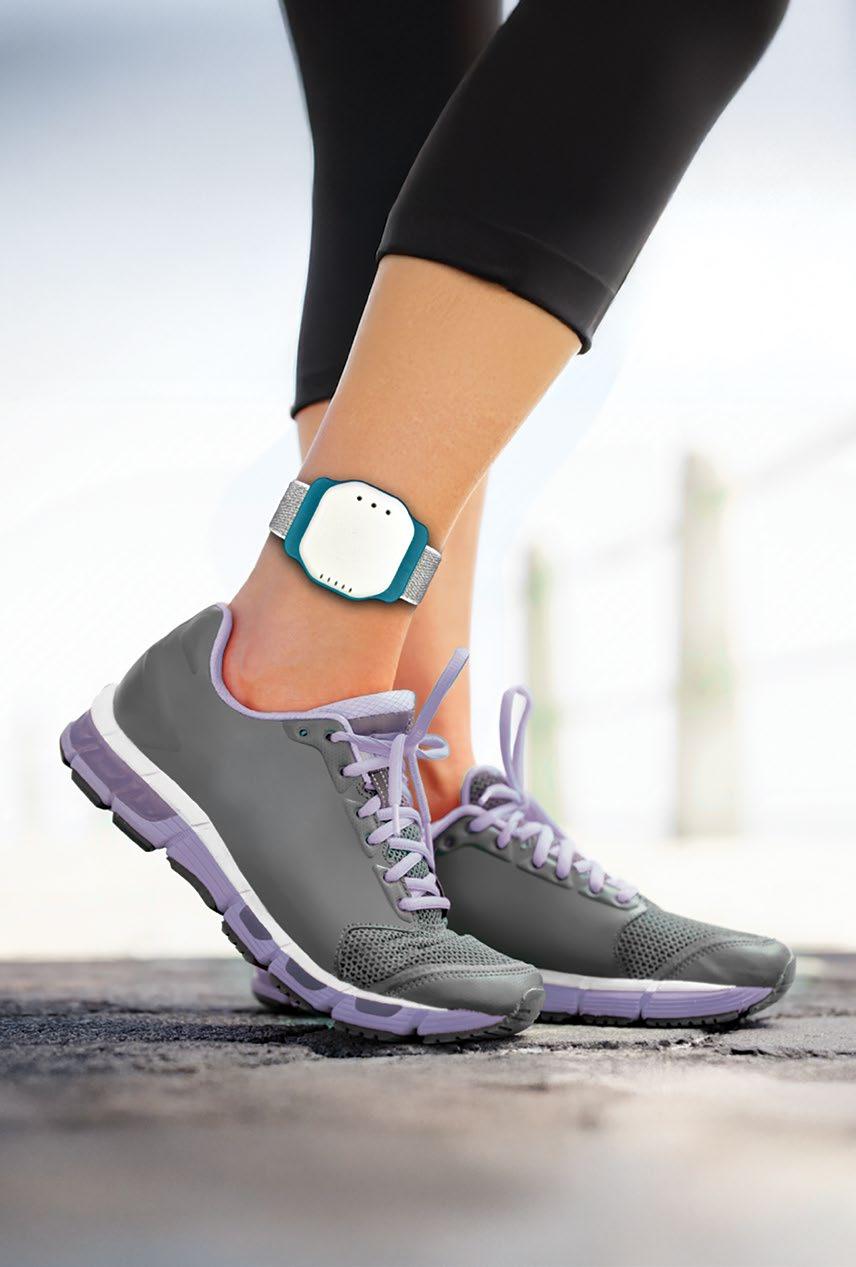
“The Modus Health StepWatch 5 provides an objective measure of real-world ambulation, allowing physical therapists to accurately track step activity and mobility progression following an acute stroke. Siskin Hospital has integrated this device into its physical rehabilitation treatments, enabling clinicians to better assess functional gains, set meaningful goals, and promote high-intensity gait training to optimize recovery outcomes.”

Jorden Watson, PT, DPT, NCS Physical Therapist, Siskin Hospital for Physical Rehabilitation
This wearable device can monitor a patient’s mobility progress.
Over the years, increasingly innovative technologies have been implemented into physical therapy programs to aid and measure patient progress. These include wearable devices, which enable physical therapists to track steps and other data throughout the day. One of the most recent advancements in wearable devices is the Modus Health StepWatch 5, the latest iteration of the StepWatch activity monitoring system. Utilized in over 600 peer-reviewed articles and more than 30 patient conditions, this FDA-listed device has proven to be an effective tool for monitoring mobility progress in patients. The StepWatch 5 is commonly used to assist individuals who require physical therapy following surgery, injury, or stroke.
The StepWatch 5 is a small and light device that is secured around the patient’s ankle with a strap and worn throughout the day to monitor their mobility. The device then transmits this data via Bluetooth to a mobile app, where the physical therapist can review the patient’s progress and adjust the treatment plan accordingly.
The StepWatch 5 is half the weight of its predecessor and has more memory storage and longer battery life compared to previous versions. Wearable devices such as the StepWatch 5 allow physical therapists to track changes, identify areas for improvement, and adjust treatment plans as needed. The accurate data delivered from the device can further customize treatment and create a better patient experience. It can also help patients visualize their progress and encourage them to work toward their goals more successfully, leading to improved outcomes.

With digital 3D scanners, dental impressions are more efficient than ever.
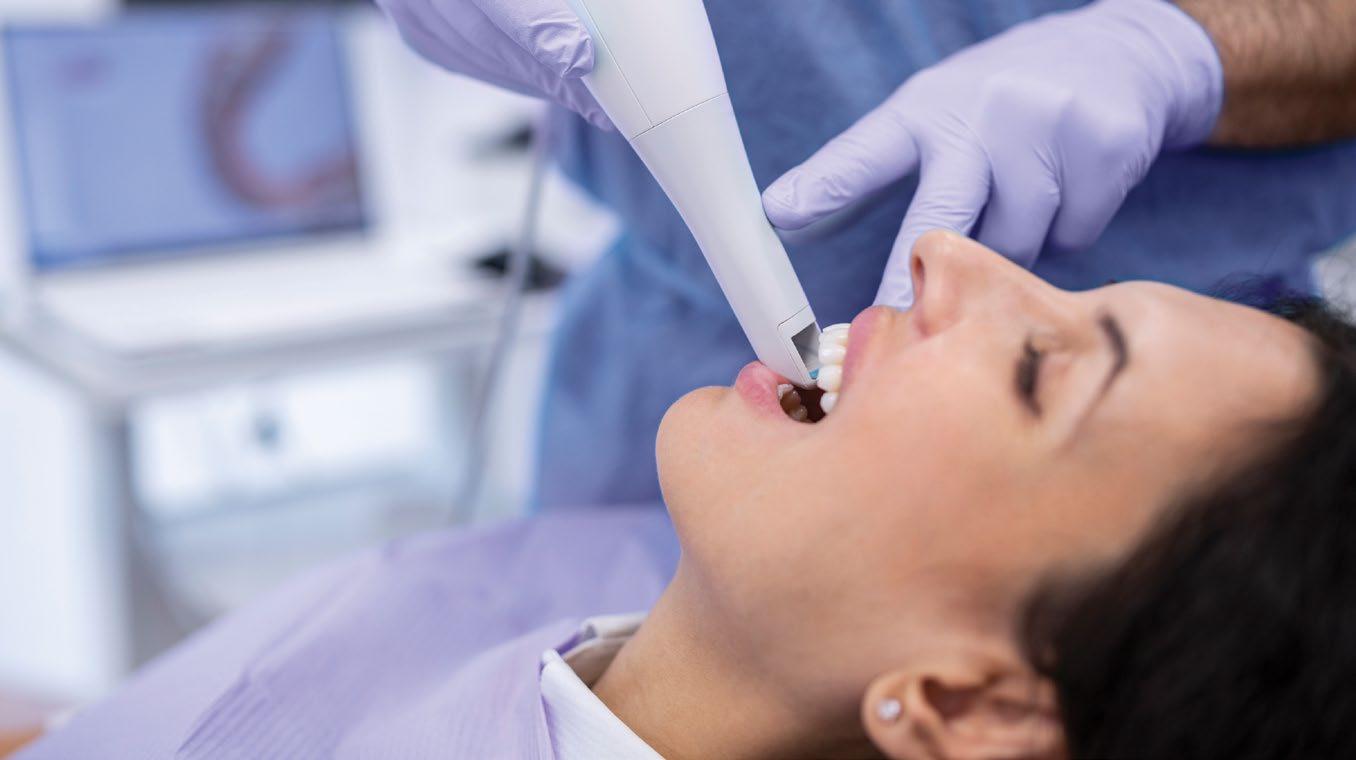
If you are in need of dental work like crowns, dental implants, or dentures, your dentist will first take an impression of your teeth and mouth. Traditionally, this has involved biting down on dental putty to create a mold – which can be an unpleasant experience for patients with sensitive teeth or a strong gag reflex. With digital impressions, however, dentists can use a scanner to create a digital 3D image of the mouth.
Your dentist will use a wandlike scanning tool to capture all the details of the hard and soft tissues of your mouth. As the device scans, computer software creates a highly accurate, 3D replica of your mouth that can be used for a variety of dental work. The entire process typically takes less than two minutes.
• More enjoyable experience. Digital impressions eliminate the need to sit with unpleasant dental putty in your mouth. Many patients dislike dental putty for its taste, the way it triggers their gag reflex, or how it irritates their sensitive teeth.
• Efficient process. The scanner can create a 3D impression in under two minutes, much faster than waiting for dental putty to harden.
• Accurate results. Your dentist is able to monitor the impression as the device scans your mouth and ensure that there are no errors in the scan. Additionally, a retake of the scan is far easier than redoing a dental putty impression if something is not right.
• Faster restoration. While traditional impressions involve creating a physical cast of your teeth after the mold is set, a digital 3D image is ready immediately after the scan is complete, expediting the restoration process.
“We are constantly looking for innovative technology to improve the quality of our treatment and the comfort and convenience for our patients. With digital impression technology we are able to achieve all of these objectives, so this was a home run investment for our practice. Patients love the digital impressions because we have eliminated the need for old, large trays full of ‘goo.’ Our team loves the system because it has improved the accuracy and quality of our clinical work.”

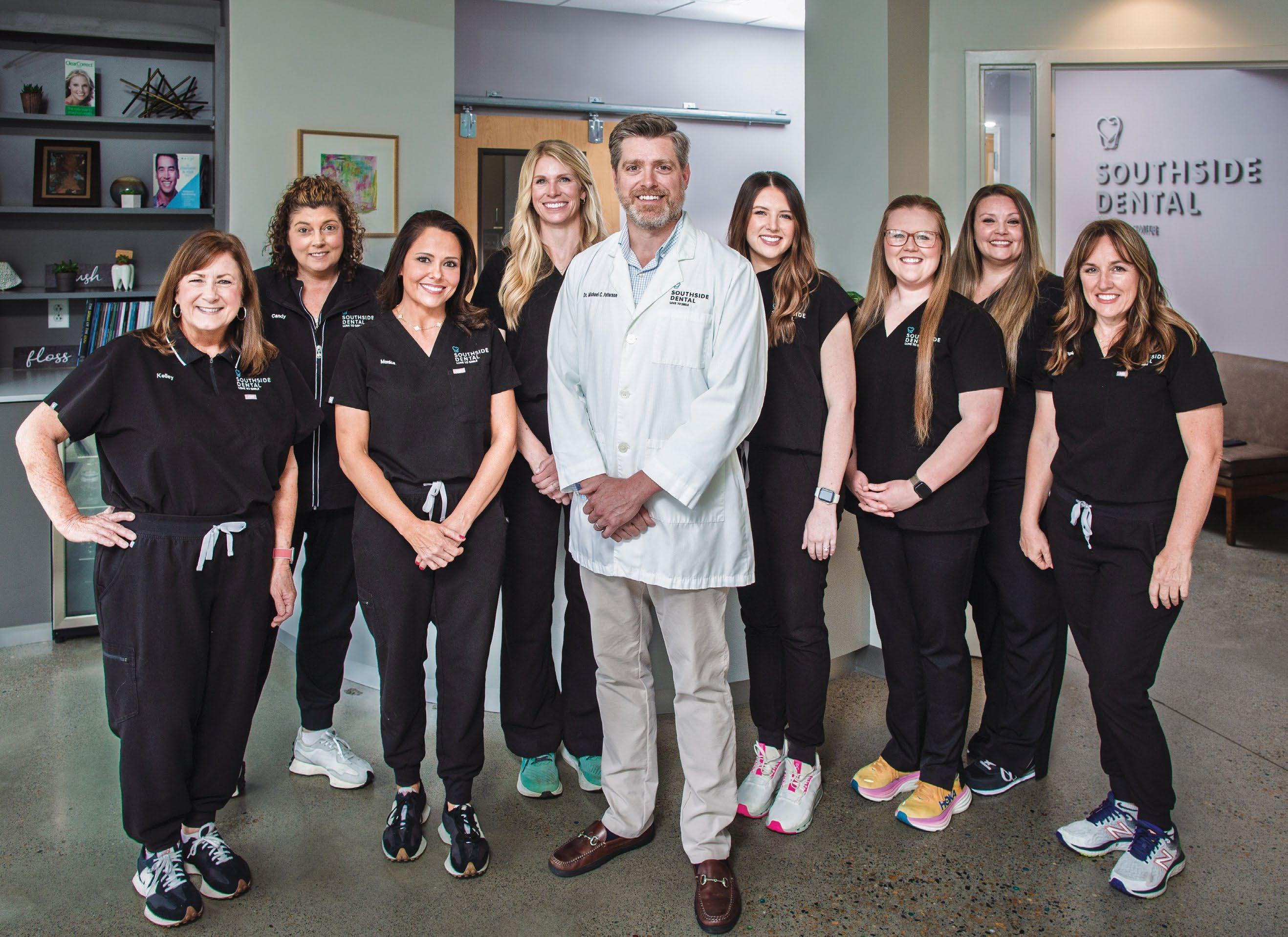

“This cutting-edge treatment could be one of the best kept secrets in the Chattanooga area. Microcurrent neurofeedback is effectively being used to treat long COVID, concussions, POTS, PANDAS, anxiety and depression, PTSD, addictions, ADHD and autism, and more. Reach out for your consultation to determine if this service is a good fit for you.”

Shan Alexander Professional Counselor and Director, Integrate Counseling
This noninvasive treatment activates the brain’s natural ability to regulate itself.
Microcurrent neurofeedback (MCN) is an innovative treatment that empowers the brain and nervous system to create healthier patterns. Different from traditional neurofeedback, the microcurrent approach uses cutting-edge technology to allow the brain to reboot itself by decreasing inflammation caused when chronically stressed. MCN is able to treat numerous symptoms, including those associated with insomnia, PTSD, anxiety, depression, addiction, migraines or chronic pain, ADHD, autism, OCD, head trauma, and more. This proven technique has been practiced for over 15 years and helped more than 75,000 patients.
MCN is noninvasive and safe for children and adults. Each treatment session lasts around 30 minutes, during which the patient relaxes in a chair with small electrodes situated along their scalp. These electrodes monitor the brain’s activity and send subtle signals to the brain to promote healthy brain waves and improve overall function.
By generating certain brainwaves, MCN can yield many benefits. The treatment introduces delta and theta waves to the central nervous system, allowing the brain to regulate dysfunctional brain rhythms and ultimately bringing it to a state of homeostasis. Some benefits of this include:
• Improved executive function
• Increased emotion regulation
• Better sleep
• A balanced autonomic nervous system
• Greater neuroplasticity in the brain
Compared to traditional neurofeedback, MCN involves half the sessions for improvement to occur and requires no active participation from the patient. The majority of people observe initial changes within one to three sessions. After treatment is complete, additional sessions are typically not required to enjoy long-lasting effects.

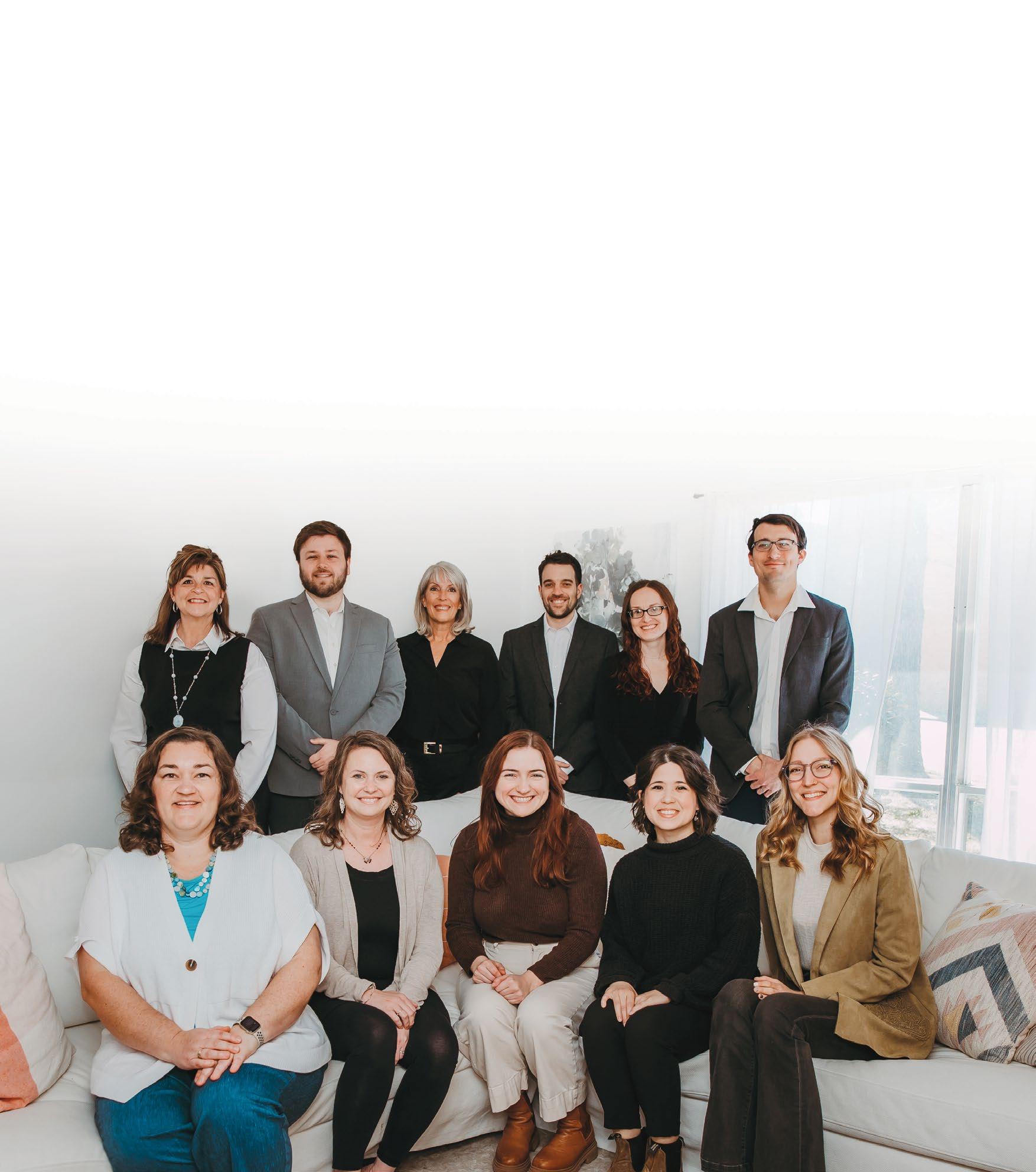
Integrate Counseling Services is a multi-modal practice housed with a trauma-informed design that immediately sets you at ease in our beautiful space. We offer evidence-based skills and services for individuals of all ages and couples/families. Our staff are honored to collaborate with you in your healing journey toward wholeness.
PSYCHOTHERAPY • SPIRITUAL DIRECTION
MICROCURRENT NEUROFEEDBACK • SPEAKING ENGAGEMENTS

“Most vision problems that are treated with glasses and contact lenses can also be treated with LASIK or similar procedures. I’ve devoted the last 30 years of my life to helping patients figure out what, if any, surgery makes sense for them. Ideally, a practice that provides LASIK also offers alternatives to LASIK, as is the case with our office in Chattanooga, where I perform laser vision correction and John Prenshaw, MD offers lens implants.”

Jonathan Woolfson, MD Founder and Medical Director, Woolfson Eye Institute
LASIK is a popular, safe, and effective method for vision correction.
LASIK, which stands for Laser-Assisted In Situ Keratomileusis, is a widely performed elective procedure designed to correct common vision problems. Each year, more than 750,000 LASIK surgeries are performed in the U.S., making it the most popular of all vision correction procedures.
LASIK corrects refractive errors, which occur when the shape of the cornea – the clear, dome-shaped surface of the eye – prevents light from focusing correctly on the retina. The procedure is commonly used to treat:
• Nearsightedness (myopia)
• Farsightedness (hyperopia)
• Astigmatism (blurred or distorted vision)
Performed in an outpatient setting, LASIK is a minimally invasive procedure that typically takes 30 minutes or less.
• First, numbing eye drops are applied for comfort.
• A gentle suction ring keeps the eye steady while the patient focuses on a target light.
• The surgeon creates a thin flap on the cornea’s surface and lifts it to access the underlying tissue.
• A specialized laser then reshapes the cornea with pinpoint precision – each laser pulse makes a soft clicking sound as it removes microscopic amounts of tissue.
• The flap is then carefully repositioned, naturally adhering and healing without sutures.
By reshaping the cornea, LASIK improves the way light is focused onto the retina, resulting in clearer vision. Most patients notice almost immediate improvement and achieve their best results within just a few days, and many are able to reduce or completely eliminate their need for glasses or contact lenses. LASIK boasts a high success rate with approximately 90% of patients achieving 20/20.
If you are considering LASIK, your eye doctor can help determine if you’re a suitable candidate and discuss what you can expect from the procedure.



Photo by Kristina Armstrong / Shot on Location at Smith-Perry Berries
As an entrepreneur, athlete, wife, and mom of five, finding balance has been a crucial part of Sheyla Jordan’s health and wellness journey. Here, Jordan shares her approach to creating a healthy lifestyle she loves as well as the practices that allow her to be available for her family while sharing her passion for nutrition and fitness through her businesses.
What is your approach to wellness? How has that changed over time?
I take a holistic approach to wellness, focusing on physical health, nutrition, mental well-being, and balance. It’s not just about looking fit, but feeling strong, energized, and emotionally grounded in my everyday life. During my first pregnancies, I became more conscious of nutrition, rest, and postpartum healing, but I struggled with consistency. After my most recent pregnancy, I shifted my focus to sustainable wellness – not just getting back in shape, but healing, building strength, and feeling good inside and out. I now take a long-term, lifestyle approach instead of short-term fitness goals. The biggest lesson? Wellness is not just about doing more, it’s about doing what’s right for your body at the right time.
How do you approach emotional well-being?
Balancing motherhood and entrepreneurship is a constant juggling act, and my emotional well-being is key to sustaining both. Here’s how I approach it:
• Prioritizing Self-Care. I make time for movement, whether it’s a quick workout, a run, or leading a Sweat Fete class. It keeps me energized and mentally sharp. Nutrition is also a priority.
• Setting Boundaries. I’ve learned to say no to things that don’t align with my priorities. I create structured work hours and family time, so I’m not constantly in “work mode” or
feeling guilty about not being present with my kids.
• Practicing Mindset Shifts. Instead of getting overwhelmed, I focus on gratitude. Acknowledging small wins keeps me motivated. I remind myself that I can do it all, just not all at once.
• Building a Support System. I lean on my tribe, whether it’s family, friends, or my business network.
• Allowing Grace. I remind myself that perfection isn’t the goal, progress is. I take breaks when I need them and don’t force productivity when my mind and body need rest.
What does your daily routine look like?
I love to start my day off with some form of gratitude. I’ll write in my journal or take a moment to pray and be thankful for all that I have, for my health, and for my family’s health. Every day looks different, but I always make sure I take the time to have a skincare routine, move my body, or just change into clothes that make me feel good. These little steps make such a big difference in my day as a mom, running a business, and just keeping up with life in general. I try to get in two to three hours of work while taking care of my littles, and then we’ll get outside if the weather permits and play until the bigs get home. Our evening routine includes homework, dinner, bath times – all the fun stuff that comes with a big
family like ours, and I wouldn’t trade it for the world!
What’s the best advice you’ve ever received?
Let love be the root of all your actions.
How do you encourage health and wellness within your family?
Encouraging health and wellness in my family is something I take seriously, but I also make it fun and sustainable for everyone. My kids see me prioritizing fitness, eating nutritious foods, and taking care of my body, so it becomes a natural part of their lives. Whether it’s running, dance fitness, or strength training, I include them in my active lifestyle so they grow up seeing movement as a normal part of life. With five kids, there’s always movement in our house! I encourage outdoor play, sports, and activities that keep them active. I involve my kids in cooking so they learn the importance of whole foods and balanced meals. I also teach them mindfulness, gratitude, and the importance of rest. Open conversations about emotions are key. I want my kids to feel heard and understood, so we create a safe space for talking about feelings. We enjoy treats and rest days without guilt, reinforcing that health is about balance, not perfection. Ultimately, I want my kids to grow up with a positive relationship with food, movement, and self-care. It’s all about creating a lifestyle, not just temporary habits.

The American Heart Association’s Woman of Impact campaign shines a spotlight on women’s health as cardiovascular disease is the leading cause of death in women. These five local women are working to fundraise in their communities to raise awareness for cardiovascular health – read on to find out each woman’s “why.”

Lorean Mays’ WHY
In 2009, my mother was immediately admitted to CICU at CHI Memorial, where she stayed for three weeks and was diagnosed with CHF. Her doctor visited her every day she was hospitalized –I credit Dr. Dowlen for saving my mother’s life. May 9 marks 16 years since her diagnosis. My mother is a CHF survivor and in the best health ever. This also marks my 16th year as National Advocate, Ambassador, and Volunteer. My mom and my family are WHY.

Lisa Blevins’ WHY
As a woman and a fitness professional, I make advocating for women’s health a top priority. My view has always been that for the world to listen, the loudest voice about health must be ours! Because of that priority, my focus extends beyond what my personal training studio can do for our athletes’ health inside the gym. That’s why, when the American Heart Association Go Red for Women movement asked me to become a local nominee for their Woman of Impact campaign, I said, “Yes.”


Misti Mattox’s WHY
Over three years ago, I received the devastating call that my mom had had a heart attack. I was 400 miles away, terrified, and helpless. I placed my faith in God and my complete trust in the doctors and nurses to save her life. I’m so thankful for the American Heart Association and the life-saving treatment options their research provides. It is a privilege and honor to represent the Chattanooga Market as a Woman of Impact for AHA.

The American Heart Association is dedicated to building healthy lives, free of cardiovascular disease and stroke, through education, caregiver support, research, and development of healthcare professionals. Go Red for Women is a social initiative designed to empower women to take charge of their heart health by equipping them with the knowledge necessary to lead healthy lives with healthy hearts.










CAREER & FINANCE
By Tory Irmeger
Like muscle memory, it can be easy to lose sight of how our daily habits impact our 9-to-5s. From morning routines to workplace organization, our unchecked automatic behaviors can reduce stress – or create it. Enter habit tracking: a record of daily, weekly, or monthly habits you wish to implement or break. The benefit of habit tracking is added accountability and motivation to maintain a positive streak. You can readjust your goals as you go, ensuring that you’re on track for your professional and personal ambitions.
The purpose of cultivating healthy workplace habits isn’t to add more stress to your life, but to create a more balanced and fulfilling workday. Begin by analyzing which areas of work you’d like to see improve. This will look different from person to person, but some common examples include:
Professional Development
• Ask for opportunities to develop skills
• Learn something new in your field
• Implement a new tool to improve your work
Work-Life Balance
• Manage your time effectively
• Set boundaries
• Ask for support
Workplace Culture
• Look for opportunities to give back
• Support team members
• Communicate in a timely manner
Once you’ve identified your workplace goals, brainstorm a few achievable habits to implement or break. For example, if your goal is to be more organized, you might set a daily habit to check your calendar and make note of what task to start with the following morning. Or, if you’re feeling stagnant in your skillset, you might look into a weekly class or annual conference where you can generate new interest in your field.
Tracking your habits, both the successes and slip-ups, helps cultivate self-awareness and solidify new behaviors. Just remember that mistakes are inevitable, and what’s more important is getting back on track. Setting a timeframe or a back-up plan can allow for human error and reduce stress. For example, you might commit to a habit for 30 days before reassessing if it’s bringing you closer to your goals.
Don’t forget to celebrate your successes as you meet professional milestones and navigate personal progress. It can be empowering to hold yourself accountable and build healthy habits, but it’s also important to have grace with yourself about factors beyond your realm of control. Keep track of your growth, and keep up the good work.

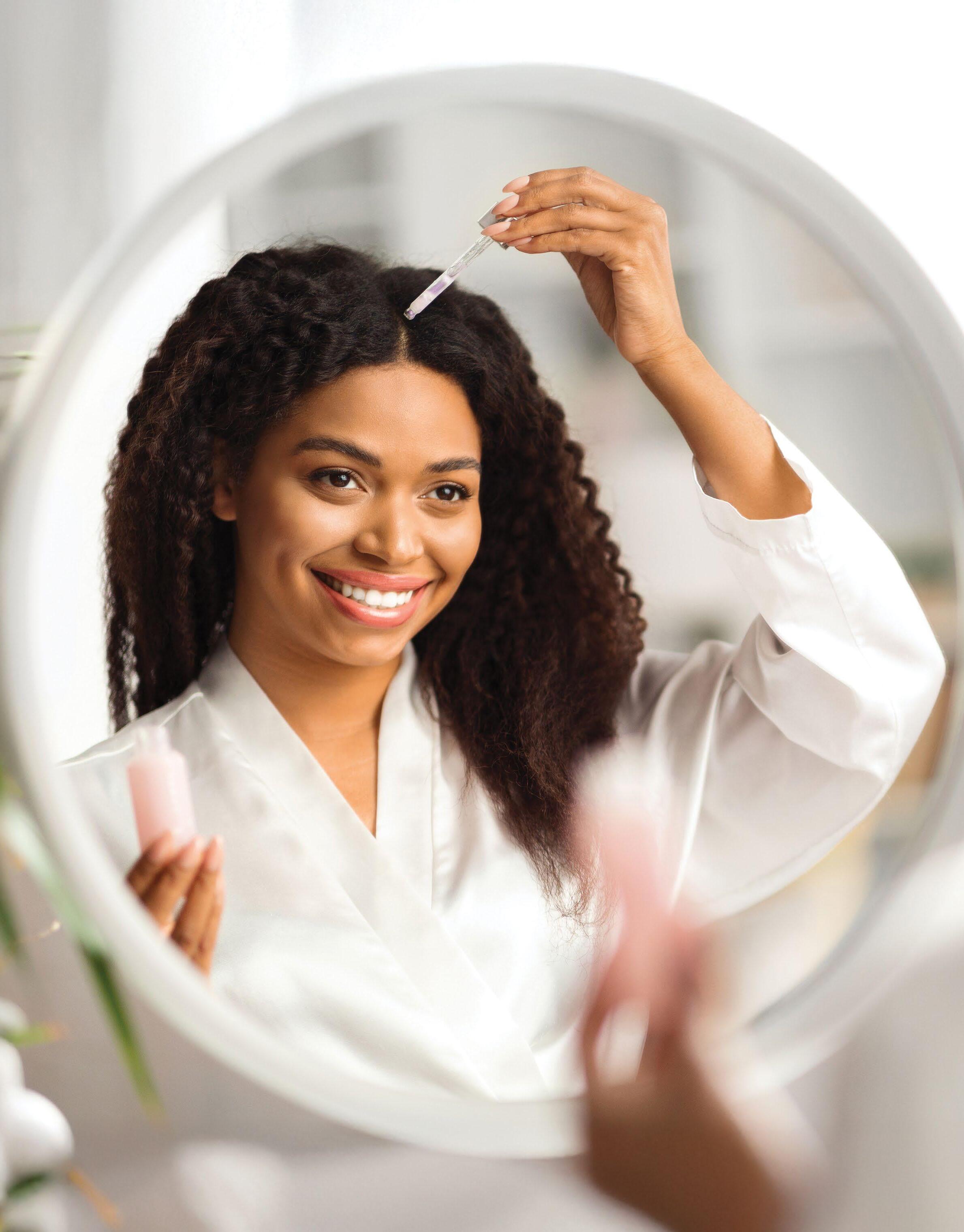
By Kristen Dee
Did you know one of the most important factors in hair care is scalp health? Read on to learn how to prioritize your scalp and promote hair growth.
Research suggests that a healthy scalp plays a large part in hair strength and growth and that hair loss is often directly linked to scalp health. Thanks to advances in hair care science, many products are available to address scalp conditions, improve overall scalp health, and promote hair growth.
With so many product options on the market for shampoos, treatments, oils, and more, the choices can be overwhelming. Figuring out your specific hair type is a great starting point, allowing you to customize your routine to your specific needs. There are helpful quizzes and tips online to determine your hair type – or ask your hair stylist the next time you’re in their chair! Once you know your hair type, select a shampoo and conditioner that supports your hair best. All hair types can benefit from incorporating a nourishing mask, such as one used in the shower or left on overnight.
Outside of a standard shampoo and conditioner routine, adding in additional treatments can help with hair growth. Hair oils have recently gained popularity, thanks to their nourishing and stimulating properties. Rosemary oil contains carnosic acid, an antioxidant and anti-inflammatory compound that helps provide nutrients to your scalp and control dandruff. Coconut oil is another popular hair oil option which has been found to balance bacteria and provide vitamins and amino acids to the scalp. These oils can be applied to the scalp and left on for at least 30 minutes up to overnight. Before showering, give yourself a fiveminute scalp massage with either your fingers or a scalp massager tool along with a hair oil of your choice. A massage can increase blood flow to the scalp, which promotes hair growth and thickness.
While products can promote hair growth, nutrition is another major key to maintaining hair health. Biotin, an essential vitamin for hair, naturally occurs in many foods, and good fats also promote healthy hair. Additionally, a lack of protein can contribute to hair loss, so incorporating protein-rich foods into your diet can help you grow and maintain your luscious locks. With a variety of products and hair care tips available, it’s recommended to research any products and practices to determine what is best for your hair health and discuss any concerns with your doctor or dermatologist.
ASK YOUR SMART SPEAKER TO “PLAY US101”

ASK YOUR SMART SPEAKER TO “PLAY WRXR IN CHATTANOOGA”

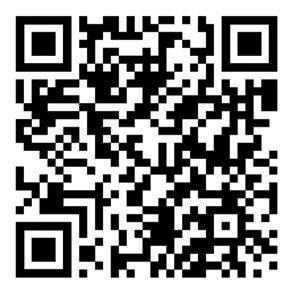


ASK YOUR SMART SPEAKER TO “PLAY 103.7 KISS FM”


ASK YOUR SMART SPEAKER TO "PLAY 98.1 THE LAKE"

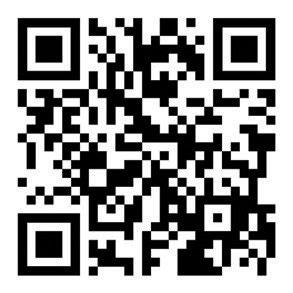

Highly skilled and compassionate, there is a lot to know about the surgeons, nurse practitioners, nurse injectors, licensed aestheticians, and other professionals who have dedicated much of their lives to serving their clients.
What follows are several of our area’s most accomplished cosmetic professionals who are serving their clients with exceptional quality services.
ERLANGER PLASTIC AND RECONSTRUCTIVE SURGERY
As a plastic and reconstructive surgeon, Dr. Todd Thurston has impacted the lives of countless clients who have elected to receive his care. Putting patients first is key for Dr. Thurston, and he strives to ensure that he and his patients stay on the same page throughout every step of the treatment process. “Making sure that both surgeon and patient have the same expectation for care is paramount to a great outcome,” he says. Equipped with curiosity and problem-solving skills honed during the past eight years in his role, Dr. Thurston seeks to continually make care safer and more effective, with a “desire to continually advance the practice of medicine.”
1
2
What influenced you to pursue your career?
When I was a teenager, one of my family members was in a severe car accident. The trauma surgeons saved their life, but the plastic surgeons gave them their quality of life back. This event reshaped my future into pursuing not only medicine but specifically plastic surgery.
What is your philosophy when it comes to the care of your clients?
A combination of ensuring that the patient and I have the same expectation of care, truly informed decision-making, and custom care for each patient. In short, I have no VIP patients as they are all VIP.
3
4
Dr. Thurston has consistently provided exceptional care since our son’s initial appointment. His dedication to delivering highquality treatment not only reflects his passion for his work but also instills confidence in us as parents. We are truly grateful to have him as a vital part of our son’s provider team.” – Kelly M.
5
What’s the key to making a great first impression?
Be present. To this end, I do not take my cell phone into a patient room. When I am with a patient, they are my focus. Staying positive and being yourself go a long way, but I think that being there in the moment with that patient is paramount.
What’s the most rewarding part of your profession?
I get the opportunity to watch some of my patients grow up from infancy to adulthood, and to watch the impact of their care in their transition to adulthood is one of the most rewarding parts of my practice.
What is your best advice for clients?
Be honest and ask questions. When a patient and a physician are on the same page in relation to goals and expectations, both benefit and the patient ends up with the best outcome possible.

Doctor of Medicine:
The University of Alabama at Birmingham – Birmingham, AL
Recognitions:
EMG Leadership Committee, 2024-2025
The Coddington Award, UTHSC College of Medicine-Chattanooga, 2018
Best Teacher Award, Department of Plastic Surgery, UTHSC College of MedicineChattanooga, 2017
Specialties: Plastic and Reconstructive Surgery
Cosmetic Surgery
Craniofacial Surgery
Orthognathic Surgery
The cornerstone of Dr. Eli Kim’s practice lies in combining holistic care with an exceptional patient experience. “This principle guides every aspect of what we do,” he says, “ensuring patients receive a top-tier dermatology experience and a journey worth raving about.” Central to this vision is Clear Beauty – Dr. Kim’s inhouse medical spa, where he serves as the on-site medical director. Here, clients benefit from the latest innovations and a suite of rejuvenative and anti-aging offerings like IV therapy. “My approach centers on truly personalized, compassionate care,” Dr. Kim explains, “from advanced aesthetics – including the only lowdowntime CO2 laser in the area – to optimizing the gut microbiome for skin disease reversal.” At every stage, the goal is to foster a trust-based relationship where patients feel genuinely heard, valued, and supported in their unique dermatological journey.
My appointment with Dr. Kim was nothing short of professional and thorough! The whole staff is kind and welcoming. I highly recommend this office to anybody looking for a top-notch skin doctor who knows what he’s talking about!” - Tiffany G.
1
Eli Kim, MD CLEAR DERM
2
What influenced you to pursue your career?
My journey into medicine began with a very personal experience: my brother’s traumatic brain injury. Seeing firsthand how compassionate healthcare could dramatically impact both patients and their families solidified my commitment to become a physician. While I ultimately chose to focus on dermatology, my background in family medicine has been instrumental in shaping my holistic approach.
What’s the most rewarding part of your profession?
Witnessing the joy and relief on my patients’ faces – whether it’s from addressing a persistent skin issue, providing a reassuring negative cancer screening, or helping them meet their aesthetic goals.
3
What’s the key to making a great first impression?
A warm smile and attentive listening form the foundation of a positive first impression. I strive to convey genuine reassurance, show respect for each patient’s concerns, and take the time to understand their overall health context so they can feel confident in their care.
4
5
How do you choose the right treatment for your clients?
Choosing the right treatment is a careful and personalized process. Whether addressing skin cancer, a cyst, or an aesthetic concern, I aim to identify the root cause and select a treatment plan uniquely suited to the individual.
What is your best advice for clients?
To remember the importance of annual skin checks, especially if you have a history of sunburns, tanning bed use, or a family history of skin cancer. By combining preventive measures with a wholeperson view, we can maintain healthy skin for years to come.

I
n the field of aesthetics for over 20 years, Melody Richt knows the importance of truly connecting with her clients. “My philosophy has evolved into building meaningful relationships,” Richt says. “It’s more than skin deep; it’s about connections, friendships, and a mutual journey towards beautiful and healthy skin.” Richt understands that each client is unique. When it comes to creating treatment plans and choosing procedures, she focuses on creating custom plans to help her clients reach and maintain long-term goals. “Every client is wonderfully unique,” she explains, “and with the insights gained from the Visia skin analysis, I’m able to personalize each skincare journey, ensuring their individual needs are met with precision and care.”
1
CLEAR BEAUTY AT CLEAR DERM
2
What influenced you to pursue your career?
My journey into skincare began as a teenager when I discovered my passion for it. Realizing that I could turn this passion into a career was a defining moment for me, and I immediately sought out the best educational path to bring this dream to life.
What’s the key to making a great first impression?
Being genuinely in tune and listening to individual concerns sets the foundation for a trusting and lasting relationship with each client.
3
4
What would you consider to be your main strengths?
My forte lies in meticulously assessing skincare needs and devising tailored plans. This approach ensures my clients not only achieve but also maintain radiant and healthy skin.
What is your best advice for clients?
Regularly use medical-grade skincare products, broad-spectrum mineral-based sunscreens, and choose safe, effective lasers and devices, like those meticulously chosen at Clear Beauty, as well as an experienced, qualified laser specialist.
5
What is your philosophy when it comes to the care of your clients?
Over 20 years, my philosophy has evolved into building meaningful relationships that are results driven. It’s more than skin deep; it’s about connections, friendships, and a mutual journey towards beauty and well-being.
G.
Melody is an absolute gem. Her expertise as an aesthetician is unmatched. She’s not only incredibly knowledgeable, but also deeply passionate about her work.” - Amy

Associate of Science Degree: Cleveland State
Certifications:
Board-Certified Micropigmentation Artist, Southern Institute of Permanent Cosmetics
Licensed Aesthetician, East Tennessee School of Cosmetology/ Aesthetics
Specialties:
Medical Aesthetics
Cosmetic Lasers
Laser Hair Removal
Laser Resurfacing
Radio Frequency
Broadband Light Energy
Microneedling
Correction of Sun Damaged Skin
Anti-Aging Procedures
Creating a comfortable and caring environment is at the core of Stacey Buckner’s med spa, Simply Beautiful MedAesthetics. “Since childhood, I’ve had a deep desire to help others. Making a difference in someone’s life through compassionate care is truly priceless,” shares Buckner. She encourages her clients to come as they are, and strives to provide a safe space to discuss and receive a wide range of aesthetic treatments. “Running a full-time business takes dedication and hard work, but my passion drives me every day,” Buckner adds. “I’m fully committed to delivering exceptional care to every patient who walks through my doors.”
I loved everything about my experience with Stacey. I appreciate how she took the time to learn more about my wants and desires about the aging process and share helpful solutions, from skincare recommendations to a treatment plan. I would 100% recommend her services to my friends. Stacey truly has a heart for what she does.”
- Bonnie H.
Stacey Buckner, FNP-BC, NP-C
1
2
How long have you been in your current position?
I’ve been in the medical field for 20 years this year, and Simply Beautiful MedAesthetics will be celebrating its second anniversary this October.
What would you consider to be your main strengths?
I believe my greatest strengths lie in my genuine, approachable nature and compassionate heart. My goal is to create a welcoming and sincere environment where everyone feels comfortable.
3
4
How do you develop a plan for each client?
Every patient is unique, and so is every treatment plan. I offer complimentary consultations to have open, pressure-free conversations and create a personalized approach that fits each individual.
What is your philosophy when it comes to the care of your clients?
It’s a marathon, not a sprint. You don’t have to look or feel like anyone else – what matters is feeling good in your own skin. Sometimes, that means a treatment, and other times, it’s simply having a conversation. And that’s okay – because every person’s journey is unique.
5
What’s the most rewarding part of your profession?
The joy of seeing someone’s face after an aesthetic treatment or celebrating the moment they come off blood pressure medication following significant weight loss – that’s why I do what I do. The little things in life are always the most significant.

Master of Science in Nursing Degree: Chamberlain University –Chicago, IL
Certifications:
Board-Certified Family Nurse Practitioner, American Nurses Credentialing Center (ANCC)
Board-Certified Nurse Practitioner, American Academy of Nurse Practitioners Certification Board (AANPCB)
Recognitions:
Preferred Provider, Best Aesthetic Injectors National Directory 2023, 2024
Top 5 Finalist – Best Medical Spa, News 12 Viewer’s Choice Awards 2024
Top 5 Finalist – Best Esthetic (Fillers) Service Provider, Best Medical Spa, and Best Weight Loss Center, News 12 Viewer’s Choice Awards 2025 2025 Faces of Sola Specialties:
Aesthetics
Gunbarrel Rd., Ste. 6 Chattanooga, TN 37421
Karla Hammonds, founder of Restored Health and Beauty, has been providing passionate care for 20 years. Listening to and praying with patients is paramount for Hammonds as she seeks to understand the holistic picture of their health and what they are seeking to improve. “I want my patients to feel like they are the most important person when they are with me,” she shares. From providing hormone treatment to aesthetic services, Hammonds’ practice is driven by her desire for patients to feel confident and “know that they can age well and live a full life.”
Karla Hammonds, ANP-BC
1
What is your philosophy when it comes to the care of your clients?
Listen, listen, listen. Then educate, educate, educate.
2
3
What would you consider to be your main strengths?
My biggest strength is my true desire to see people look and feel their best. I seek to understand the root of the problem so that I can eliminate the cause and truly change the health trajectory of my patients.
How do you choose the right procedure for your clients?
I listen to their concerns and explain all of the options to obtain their desired outcome. I review the risks, benefits, and costs for each, and of course, I allow plenty of time for questions. Finally, I make recommendations based on our discussion.
4
I’m so grateful to have met Karla almost eight years ago. She transformed my health inside and out when others couldn’t. Aging is not always easy, but thanks to Karla, I’m living a vibrant life.” – Suzanne M.
5
What’s the most rewarding part of your profession?
Having a patient tell me I have changed their life. It feels amazing to know that God has used me in the purpose for which He created me, which is to bring health and an improved overall sense of well-being and self-worth to the people I serve.
What is your best advice for clients?
Follow the treatment plan developed specifically for you, and you will have great results!

Master of Science in Nursing Degree: Vanderbilt University –Nashville, TN
Certifications:
Board-Certified Adult Nurse Practitioner, American Nurses Credentialing Center (ANCC)
Bioidentical Hormone Replacement Therapy Certification, Worldlink Medical
O-Shot, P-Shot, Vampire Facelift, and Vampire Breast Lift Certifications, Cellular Medicine Association
Specialties:
Bioidentical Hormone Replacement Therapy
Metabolic Health
Nonsurgical Aesthetic Procedures
Maureen McIntosh is breaking the mold with her mobile med spa, Saving Grace Aesthetics. Born from the desire to empower clients and make care convenient, McIntosh says her company “celebrates inner beauty first and foremost, but also recognizes and supports those who are busy or more private in nature and prefer to receive treatments in the comfort of their own homes.” When providing aesthetic services, McIntosh aims to create a space “where everyone is valued and welcomed with grace.” She adds, “It’s more than just beauty – it’s about embracing God’s gift of self-care and helping others to recognize their own worth.”
You are in amazing hands with Maureen and team! She is knowledgeable, caring, and such a good time! You will for sure feel at ease and excited you did it.” - Mary Kate S.
1
Maureen McIntosh, MSN, NNP-BC SAVING GRACE AESTHETICS
What influenced you to pursue your career?
I wanted to create a place where people could feel restored –not only in their bodies but also in their spirits.
2
What is your philosophy when it comes to the care of your clients?
Concierge, personalized care that utilizes safety and comfort. We provide education and transparency, build trust, and approach every treatment with integrity, kindness, and commitment to excellence. We believe everyone should be able to invest in becoming their best self.
3
What’s the key to making a great first impression?
A smile, a hug, and laugh. Life can be too serious ... sometimes it needs to be fun!
4
5
What’s the most rewarding part of your profession?
Seeing the smiles on my clients’ faces and sharing in their transformation gives me complete joy. One of my clients recently sent me her “first selfie” ... until then, she had never taken a picture of herself because she didn’t feel worthy. That made me cry happy tears.
What is your best advice for clients?
Keep it up – continuous improvement is better than delayed perfection. It can take only one year to completely change your life!
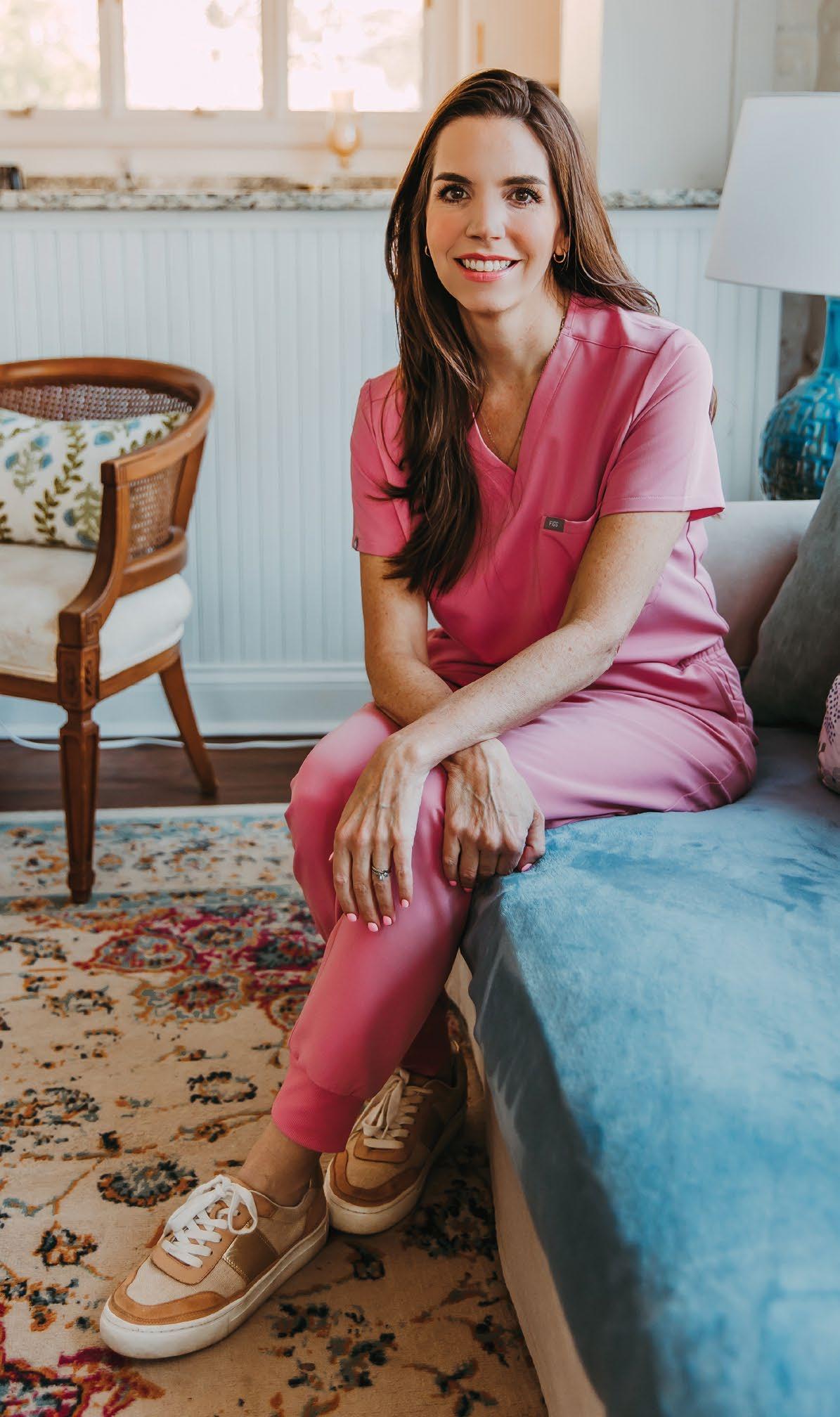
MY CREDENTIALS
Master of Science in Nursing Degree:
Saint Francis Medical Center College of Nursing –Peoria, IL
Certifications:
Neuromodulator Certified Nurse Practitioner, Empire Medical Center
Recognitions:
Spirit of Excellence Award, Erlanger, 2024
March of Dimes Nurse of the Year Finalist, 2018
Clinical Excellence in Nursing Award, Northside Hospital, 2006, 2016
Specialties:
Lip Flip
Bunny, Forehead, and Frown Lines
Crow’s Feet and Under Eyes
Neck and Jawline
TMJ
Jill Monterde has felt a pull to the nursing profession for as long as she can remember. In 2012, Monterde transitioned from the hospital setting to facial injections, and today, she pursues her passion through her aesthetics business, Fancy Faces. “It is my goal to help others feel better and regain the confidence that is sometimes lost as we begin to see the signs of aging,” she shares. In helping clients address their aesthetic concerns, Monterde makes it a priority to provide the right amount of filler so clients can leave feeling confident and looking refreshed.
1
Jill Monterde, BSN, RN
FANCY FACES
2
What would you consider to be your main strengths?
Listening to my clients’ concerns and focusing on what they want to address. Then I develop a treatment plan for them that is realistic and attainable. My goal is for everyone I treat to look refreshed and never overdone.
What is your philosophy when it comes to the care of your clients?
I want every client to achieve the results that I would expect for myself – nothing less.
3
4
Jill is simply the best. She listens to what you want and gives you her honest recommendation. She’s conservative, so you never have to worry that she’s going to try and upsell! She really wants you to look and feel your best! She truly cares about her clients, and the time and effort she puts into her work speaks volumes about her professionalism and your end-result expectation. She’s the real deal!” – Pam C.
5
What is one of your happiest professional moments?
Working with an ovarian cancer survivor who, after chemotherapy, had significant facial wasting. After her filler injections, I gave her a mirror, and she started crying, saying she felt like herself again. That was a great day!
What is your best advice for clients?
Remember that when you try to make things perfect is when things tend to go wrong. Always strive for improvement, not perfection.
What’s the most rewarding part of your profession?
Clients leaving happy with their results and feeling confident about their appearance.

Bachelor of Science in Nursing Degree: Southern Adventist University –Collegedale, TN Certifications:
Medical Training Specialties: Toxin Injections Facial Filler Injections
1
After starting her nursing career in the NICU, Shelby Bess Lewonczyk discovered a passion for aesthetics and became a nurse aesthetic injector. “No day is ever the same, which is what I love about the aesthetic field. It is constantly evolving,” she shares. Building trust with her clients is central to Lewonczyk’s approach to care. “Starting as a brand-new injector four years ago, I am so grateful for the patients who believed in me, supported me, and trusted me with their beautiful faces and those that continue to do so today. It is such an honor to treat each one of them,” says Lewonczyk. “I am truly so blessed by them all and thank God I get to do what I do every day!”
2
Shelby Bess Lewonczyk, BSN
PURE FACE CARE
3
What influenced you to pursue your career?
Years into my nursing career I sought help with my own skin issues and got lip filler done and gained confidence in myself, which led me to pursue a career in aesthetics to help others gain confidence in themselves, too.
What would you consider to be your main strengths?
Being my authentic self and genuinely listening, connecting, and building trusting relationships with my patients.
What is your philosophy when it comes to the care of your clients?
Each one of us is beautiful in his or her own unique way. My goal is to provide my patients with individualized care to enhance their features while providing them with a natural, rested look. I want my patients to look at themselves and love what they see.
4
I can’t say enough good things about Shelby L! We started out as coworkers, and when she left the NICU to do injections, I was so excited to book with her. She has done an amazing job and has always made me feel so comfortable, explaining everything that she is doing. She is so personable and makes sure to reach out to make sure I love my results. I’ll be following her wherever she goes!”
- R. Lewis
5
What’s the most rewarding part of your profession?
In the aesthetic field I not only get to care for others but I get to have a small part in helping them feel better about themselves, too. The best part of being an injector is handing them a mirror at the end and seeing their reaction. It fills my heart with joy!
What is your best advice for clients?
Trust the process! Beautiful skin is a journey. Sometimes it takes several modalities, treatments, and procedures to get our skin where we want it to be and to see the results we want. We must be willing to commit to the journey and maintain it over time.

Bachelor of Science in Nursing Degree: University of Tennessee at Chattanooga –Chattanooga, TN
Certifications:
Allergan, Galderma, and RHA Training, 2021-2024 Recognitions: Allergan Injector Symposium, 20232024
1
Tracy Sherrer discovered her affinity for aesthetics after receiving a treatment of her own. “When the results kicked in after about a week, and my expression lines were gone, I was hooked! I had been a nurse practitioner for years in various specialties, but that was when I decided I had to learn to do aesthetics. So I did, and never looked back!” she shares. Now the owner of Three Graces Aesthetics, Sherrer utilizes her 17 years of experience as an aesthetic injector to help her clients achieve their goals. From actively listening to creating personalized treatment plans, Sherrer works to ensure her clients feel confident in their care and get results that they love.
2
What’s the key to making a great first impression?
A smiling face; a welcoming, professional, and confident demeanor; and a clean, calming, comfortable, and aesthetically pleasing office environment.
How do you develop a plan for each client?
I formulate a plan based on 1) the client’s own perception of what they want improved, 2) consideration of the client’s budget, and 3) the tools and skills in my arsenal to give them the best results and meet their goals.
3
What is your philosophy when it comes to the care of your clients?
My clients are number one. I want each person who enters my practice to feel comfortable, non-intimidated, and like a friend. I want them to be totally comfortable and confident in my skills to safely and competently take care of their aesthetic wants and needs.
4
Tracy is amazing at what she does, is so very genuine, and knows how to make you look and feel like a queen. Her staff is A+. I had filler in my cheeks and lips the other day, and all I can say is ‘Wow.’” – Patty B.
5
How do you choose the right procedure for your clients?
I base the treatment plan on their goals and budget. I also make suggestions, and make it clear that they can take time to consider what I suggest, without feeling pressured or “upsold.”
What’s the most rewarding part of your profession?
When my clients are thrilled with their results and tell all their friends, who then come to me for their own treatments. It is also very rewarding and humbling to me that my business has grown mostly organically purely by word of mouth and referrals from happy clients.

Fabrics sourced from plants and animals have been around for centu ries and are still widely worn today. Here, we review the different types and share the benefits of natural-fabric clothing.
By Rachel Studebaker
Plant-based fabrics
Bamboo
Bamboo fabrics, which include bamboo linen and bamboo viscose, are stretchy and highly breathable. Because of this, they are commonly found in undergarments, socks, and t-shirts.
Cotton
Cotton is widely regarded as the most popular fabric in the world, and for good reason. This staple fabric is praised for its comfort, breathability, and moisture-wicking properties.
Hemp
This versatile fabric is sourced from the hemp plant. It is one of the most sustainable options and has a strong composition that gets softer with each wear.
Linen
Made from the flax plant, linen is perfect for staying cool on hot summer days due to being lightweight and highly breathable.
Silk is an elegant fabric spun from the cocoons of silkworms. Known for its sheen and softness against the skin, it is often found in luxury clothing items.
Wool is a warm fabric sourced from the hair of animals such as sheep, goats, alpacas, and llamas. It’s commonly used to create cozy winterwear including coats, sweaters, scarves, and socks.
Natural fabrics boast many benefits, including being:
Durable. If cared for properly, they are long-lasting and can be worn frequently without any wear and tear.
Breathable. With a higher permeability than most synthetically produced fabrics, natural fabrics prevent odors and keep wearers dry.
Antimicrobial. They naturally reduce the spread and growth of bacteria.
Gentle on the skin. Individuals with sensitive skin, allergies, or conditions such as eczema may benefit from wearing natural fabrics, particularly those that have not been bleached or chemically dyed, as they are gentle on the skin and often hypoallergenic.
Sustainable. Biodegradable and more sustainable than synthetic options, natural fabrics are a good option for those looking to minimize their environmental impact.
Because they are minimally processed, natural fabrics may need a little extra love, whether it’s air drying, ironing, or only washing at certain temperatures. Make sure to take proper care of your natural-fabric clothing items by reviewing the care instructions on their labels so you can enjoy them for years to come!


By Tory Irmeger
Whether relaxing, remodeling, or spring cleaning in the home, we want to breathe easy knowing the indoor air quality is as clean as can be. It’s estimated that Americans spend 90% of their time indoors, making indoor air quality as crucial as ever. Air pollutants can adversely affect anyone, but children, older adults, and people with preexisting health conditions are more vulnerable to the negative health effects of air pollution. Here, we’ve provided a few tips on monitoring air quality in your home so you can keep your family healthy and safe.
Looks for signs of unhealthy indoor air.
Indoor air quality is influenced by factors both inside and outside of the home, including climate conditions, building materials, and daily human activity. There are some giveaways for poor air quality indoors: visible signs of mold or mildew, high humidity, poor ventilation (especially in cooking areas), dust and pet dander, and sources giving off odors or particles. To promote healthy air in the home, first remove or reduce the source causing pollution, look for ways to improve ventilation, and then employ filtration systems to purify the air.
Inspect building construction and furnishings.
Building construction materials and furnishings can be sources of harmful air pollutants like asbestos and lead, especially in older buildings. These materials are more likely to contribute to low air quality if they are damaged or deteriorating. New building materials, including pressed-wood products, paint, and carpeting, can also emit harmful compounds like formaldehyde.
If you suspect your home has contamination from one of these products, be sure to connect with a trained professional to test and treat the materials.
Regularly service combustion appliances.
In the U.S., two-thirds of households burn fuel, such as natural gas, wood, or propane. These appliances heat homes and water, dry clothes, and cook food, but they can also emit harmful emissions. One step to protect your family against pollutants from fuel burning is to make sure the home is well-ventilated and appliances are regularly serviced and in proper working order.
Keep surfaces dust-free.
Dusting is an easy way to reduce contaminants in your home. Animal dander, dust mite matter, and pollen are often invisible in the home, but they can still negatively affect air quality, triggering people with allergies and asthma. Be sure to regularly wash fibrous surfaces that can trap dust, including bed sheets, upholstery, rugs, and carpets.
Whether you’re aiming to send a helpful hint to your husband, buying for your own mother, or just recognizing a special mother in your life, here is our collection of unique gifts from local stores that are sure to make any mother feel cherished and celebrated.


Fink’s Jewelers | Roberto Coin Cialoma Double Diamond Flower Link Lariat | Necklace $5,610
“This Roberto Coin necklace is perfect for any special mom in your life. This dangle necklace features both yellow and white gold with stunning intricacies like almond links and gold flowers accented with diamonds.”
About Fink’s Jewelers: Family-owned and operated since 1930, Fink’s takes pride in offering the same quality, service, and selection as the day they opened the first store. With over 90 years of experience, Fink’s offers a vast selection of fine jewelry, Swiss timepieces, and an expansive collection of fine diamonds.

Antony Sprason 423.894.1188 | finks.com @finksjewelers
Designer Drugs | Pricing available upon request
“Pamper Mom with skincare that loves her back – because she deserves to glow! Barrier Rx keeps skin happy and hydrated, while Peptide Rx restores firmness and glow. For a spa-like experience at home, the Clear+Calm Mask purifies and soothes with Mediterranean kaolin, green tea, and willow bark, and the Correct+Brighten Mask nourishes and brightens with goji berry, cranberry, and Mediterranean kaolin.”
About Designer Drugs: Designer Drugs is a premier compounding, anti-aging, and specialty pharmacy, dedicated to providing best-in-class service for both patients and providers. We design customized solutions for optimal patient care while offering innovative clinical consultations and precision protocols to support healthcare professionals in delivering cutting-edge treatments.

Tanya Manoni, BSChem, PharmD, FAAMM 423.954.2585 | designerdrugs.us @designerdrugspharmacy
Brody Jewelers | In stock - Pricing available upon request
“Give Mom accessories she will cherish for a lifetime! This diamond necklace & ring set features a 14k yellow gold diamond by the inch paperclip necklace totaling 2.10 carats with a matching 14k yellow gold band totaling .60 carats. This set is the perfect gift to accessorize the already beautifully unique mom in your life.”
About Brody Jewelers: Brody Jewelers is a family-owned and operated fourth-generation jeweler established in 1937. Celebrating 88 years of service to the community, they offer personalized attention to every client. Louis Brody
706.866.3033 | brodyjewelry.com @brodyjewelers
Plum Nelly Shop | $45 each
“Mom is sure to love these hand-painted ceramic mugs featuring a beautiful floral design. Handmade by local artist Wendy Clark of Wendy Clark Ceramics, the mugs will bring a smile to her face as she enjoys her morning cup of coffee or tea. Each piece is unique and a work of art all its own.”
About Plum Nelly Shop: Celebrating over 50 years of business, we carry a unique array of locally and regionally made pottery, glass, jewelry, art, and giftware as well as stationery, invitations, and so much more.

Catharine Daniels
423.266.0585 | plumnellyshop.com @plumnellyshop
Epperson’s, A Fine Jewelry Studio | Pricing available upon request
“This custom design jewelry session guarantees the special mom in your life gets exactly what she wants. One-on-one, she can design the exact piece of jewelry she’s always wanted. Reimagining jewelry she already owns or starting from scratch sourcing desired diamonds or gemstones, she’s sure to create a custom piece perfect for her.”
About Epperson’s, A Fine Jewelry Studio: Ellen is a second-generation jewelry designer whose passion is creating clients’ dream jewelry. Committed to quality craftsmanship and unmatched customer service, Epperson’s offers delivery, design, and personal shopping appointments for Cleveland and Chattanooga clients. Open by appointment.

Ellen E. Wiberley
423.479.2847 | eppersonsjewelers.com @eppersonsjewelers




“There is no doubt that it is around the family and the home that all the greatest virtues are created, strengthened, and maintained.” - Winston Churchill
The age of technology and hustle culture has made family time harder than ever to navigate. However challenging it may seem, extra effort and intentionality can lead to substantial, longterm rewards. Read on to discover how quality family time boosts health and well-being, along with fun family activity ideas to strengthen your bond with loved ones.
By Lindsey Clute
In an era where smartphones take precedence at the dinner table and Saturday nights are spent in front of the TV, quality family time is becoming more scarce. According to a 2023 study, 73% of U.S. adults say that time spent with family is of the highest importance. However, a 2024 study showed the average American family spends just over six hours together each week – less than one hour each day.
Although it may be unsurprising in today's world that shared family time is few and far between, this deficiency should not be taken lightly. Spending time with loved ones isn't just a feel-good practice – it has proven health benefits. No matter your age, family size, or structure, prioritizing time together can significantly enhance overall quality of life.
Reduces stress and improves mental health. Studies show that those with strong family ties practice healthier stress-related coping mechanisms. Additionally, a person’s happiness and psychological well-being are directly linked to interactions with close family and friends.
Improves behavioral health. Spending time with family reduces the risk of behavioral issues like violence and substance abuse in children. Positive reinforcement for good behaviors and shared family activities help children manage emotions and foster healthy decision-making. Additionally, learning to manage disagreements with family will, over time, lead to improved conflict resolution skills.
Aids in early childhood development. Engaging with loved ones is key to development, especially for young children, as navigating life’s ups and downs together promotes adaptability. Intergenerational interactions also help build social skills and reinforce values, beliefs, and norms.
Enhances physical health. Spending time with family can boost physical well-being. Shared meals promote healthier diets and activities like sports, hiking, and exercising improve fitness and support heart, brain, and immune health while encouraging healthy habits.
Lengthens life expectancy. It’s been shown that an individual’s relationships can greatly impact life expectancy, with healthy relationships increasing one’s lifespan by up to 50% and resulting in longer, happier lives.
Take a family vacation. Family vacations are often dismissed due to planning and budgeting requirements. However, carving time out for a family trip every few years can result in memories that will last a lifetime and provide the opportunity to slow down, relax, and enjoy a much-needed break from the busyness of life.
Initiate weekly family dinners. Designate one night per week where the family shares a meal together. Use this time to talk, catch up on the day, and have meaningful discussions. Feel free to get creative with meal ideas – roasting hotdogs around a fire is sure to spark excitement!
Get outside. Family time combined with fresh air equals an immediate mood and serotonin boost! As the weather starts warming up, get out in nature and soak up the sun. This could be going for a hike, having a picnic in the park, or having a pool day.
Have a game night. Invite friends over for this one, or keep it to just the family. Make sure to include a mix of games that all family members can enjoy. Throw in some trivia for an added learning experience!
Volunteer at a local organization together. Combine quality family time with philanthropy! Choose a project that the whole family is passionate about and spend a day making a difference in the community.
Tip: Make any activity screen-free to ensure the focus is on connecting with the family!
SMALL BUT
Known for their ability to easily blend into a wide variety of dishes, seeds are quite possibly one of the most versatile food groups. From chia seeds to hemp seeds and more, these highly nutritious meal boosters are a good source of plant-based protein, healthy fats, fiber, and vitamins and minerals. Read on for some favorite local recipes to level up your wellness game this season!

“Seeded honey is a very unique item that, in addition to being delicious and pairing well with sandwiches, bagels, bacon, and crackers, is also very healthy for you. Overall, seeded honey can be a delicious and nutrient-packed addition to your diet, supporting everything from digestion and heart health to immunity and mental wellness!”
– Chef Erick Wood




SERVES 6
A tasty and nutrient-rich twist on avocado toast
SERVES 4
• 1 cup flax seed
• ¾ cup pepitas
• ¾ cup sunflower seeds
• ½ cup hemp seeds
• 1 cup water, warm
• Pinch of salt
• Olive oil, to coat
For the toppings:
• 1 avocado, sliced
• Pinch of nutritional yeast, to taste
• Pinch of red pepper flakes (optional)
Preheat the oven to 350°. Add all seeds, water, and a pinch of salt to a large bowl and let sit for 15 minutes, stirring occasionally. Line a baking sheet with parchment paper and brush with olive oil. Next, spread the mixture evenly on the sheet and brush with a layer of olive oil. Bake for 30-35 minutes. Let cool, then break into large crackers. Top with sliced avocado, nutritional yeast, and spices.
“I like this recipe because it is the perfect mix of creamy, crunchy, and a little spice. The healthy fats in avocado keep me full and fuel my body, while the fiber-rich seeds add extra nutrients and texture. It’s a simple, satisfying snack packed with heart-healthy benefits, vitamins, and deliciousness in every bite!”
– Nicole Griffin

These apple nachos offer a delicious and heart-healthy twist on a classic snack, featuring crisp apple slices topped with peanut butter, sunflower seeds, and peanut butter drizzle. A fun and nutritious treat for all ages!
• ⅓ cup dried unsweetened cranberries or raisins
• ¼ cup sliced almonds, unsalted
• 2 Tbsp. shelled sunflower seeds, unsalted
• 3 medium green or red apples, cored and thinly sliced into 12 wedges
• 1-2 tsp. fresh lemon juice
• 2 Tbsp. water
• ¼ cup smooth peanut butter, low-sodium
• 1 Tbsp. honey
In a small bowl, stir together the cranberries, almonds, and sunflower seeds. Layer half the apples on a large plate or platter. Sprinkle the lemon juice over the apples to keep them from browning. In a small microwaveable bowl, microwave the water for 2 minutes, or until boiling (or boil on the stovetop and pour into a small bowl). Add the peanut butter and honey, stirring until the mixture is smooth. Using a spoon, drizzle half the peanut butter mixture over the apple wedges. Sprinkle with half the cranberry mixture, then layer the remaining apples. Drizzle the remaining peanut butter mixture on top, followed by the rest of the cranberry mixture.
Nutritional Information
Calories 167 | Total Fat 7.5g / Sodium 66mg Total Carbohydrate 22g / Dietary Fiber 4g Sugars 15g / Protein 4g
Source: American Heart Association

“I’m passionate about barre because it provides a full-body workout that focuses on strength, flexibility, and balance, all while being low-impact, making it accessible to various fitness levels. When it comes to form, it’s really important to keep a neutral spine to protect your joints and improve posture. With core engagement, it helps to focus on having a heavy tailbone, closing the ribs, and keeping the spine long. I want to show how easy it is to get a quality barre workout with little to no equipment.”
Jillian Dawson, Personal Trainer, Ozone Fitness

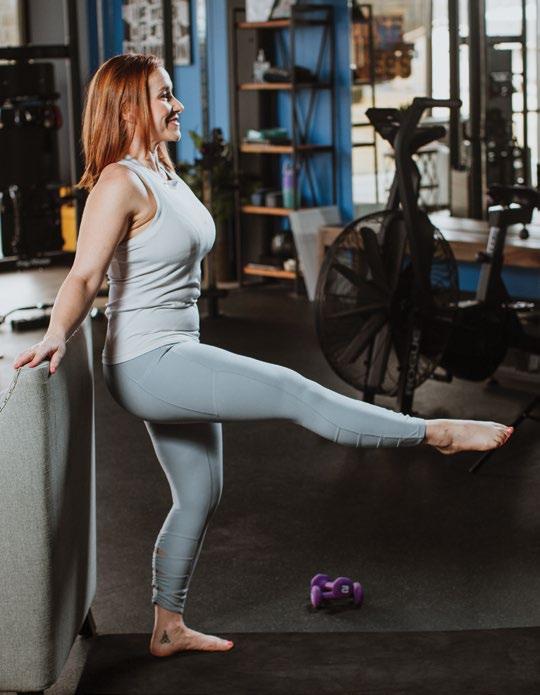
Straight leg lifts are great for core engagement, hip mobility, and strengthening hips and thighs. Think of pulling up your kneecap and squeezing your thigh as you do this movement. To add variation, you can do a pointed or flexed foot, little lifts, or circles. Make sure to keep the hips and shoulders squared.
This full body prone lift (Superwoman), along with a variation of skydiver moves, targets everything backside and core, and also improves posture and enhances overall stability and coordination. Make sure to keep the neck long, feet flexed, and think of peeling your thighs and chest away from the ground while squeezing up to your highest point. Once you are reaching long at the top, pull your elbows into your back pockets, squeeze your shoulder blades together, keep your chin down, and then pull your heels together while keeping the knees wide. Then, return to the original position.


With a straight back leg, hinge from the hips, keeping a straight line from the crown of your head down to your toes. Do not allow the spine to cave out or the hips to roll open. Once you get to your lowest point, feeling the back of your hamstrings open, lateral reach the arm wide, squeezing the back of your shoulder. Keep the chin down and feel the shoulder blade squeeze in towards your spine. Then, return to the original position.


Alternating bicep curls with bicycle legs is the best of all worlds, targeting arms, core, and legs. Be aware of not arching the back and straining the neck. Keep the core engaged as you reach one leg in and one leg out, alternating. Holding the crunch position, press your chin and heart towards the sky and hold. Extend one arm at a time, alternating the legs, and create tension in your biceps with the movement.


The side plank with the oblique crunch is a perfect addition to your routine. Side planks work not only the obliques but also the arms, legs, glutes, and shoulders, providing a comprehensive workout for your core and upper body. To start, you will reach in a straight line from your fingers all the way down to your foot, keeping your hips up at your highest point. Then, as your hips descend down to the ground, draw your elbow to your knee, touching for an oblique crunch. Then, return to the original position.



Nancy Bartley su ered three strokes before moving to Chattanooga. The therapy care she received at other facilites left Nancy with de cits she thought she would have to live with for the rest of her life, but then she learned about Siskin Hospital’s Center for NeuroRecovery. Nancy realized she had a choice. With the help of the specialized equipment and highly skilled clinical team at Siskin Outpatient Therapy, Nancy was soon making signi cant progress - over a decade after her last stroke. And for that, she is beyond grateful.

At CHI Memorial’s Rees Skillern Cancer Institute, a team of specialists works together to provide expert, personalized cancer care. From physicians to social workers, they collaborate to create a tailored treatment plan that may include surgery, chemotherapy, radiation, and additional supportive therapies. It’s teamwork at its best. Visit Memorial.org for more information.